Mr. Dai Ze celebrates his centennial birthday in 2022, by the end of the year, on December 18th, “Drawing from the Unseen: A Retrospective of Dai Ze’s Landscape Paintings” was unveiled at the Chengdu Art Museum from a novel perspective. It not only presents Dai’s achievements in landscape paintings, but it is also the first time for him to hold a solo exhibition in his homeland. The scenes such as Chengdu, Dujiangyan, and the Three Gorges depicted by the artist in different periods made the audience feel so cordial that the exhibition adds another touch of splendor to Dai’s artistic display by the end of 2022.
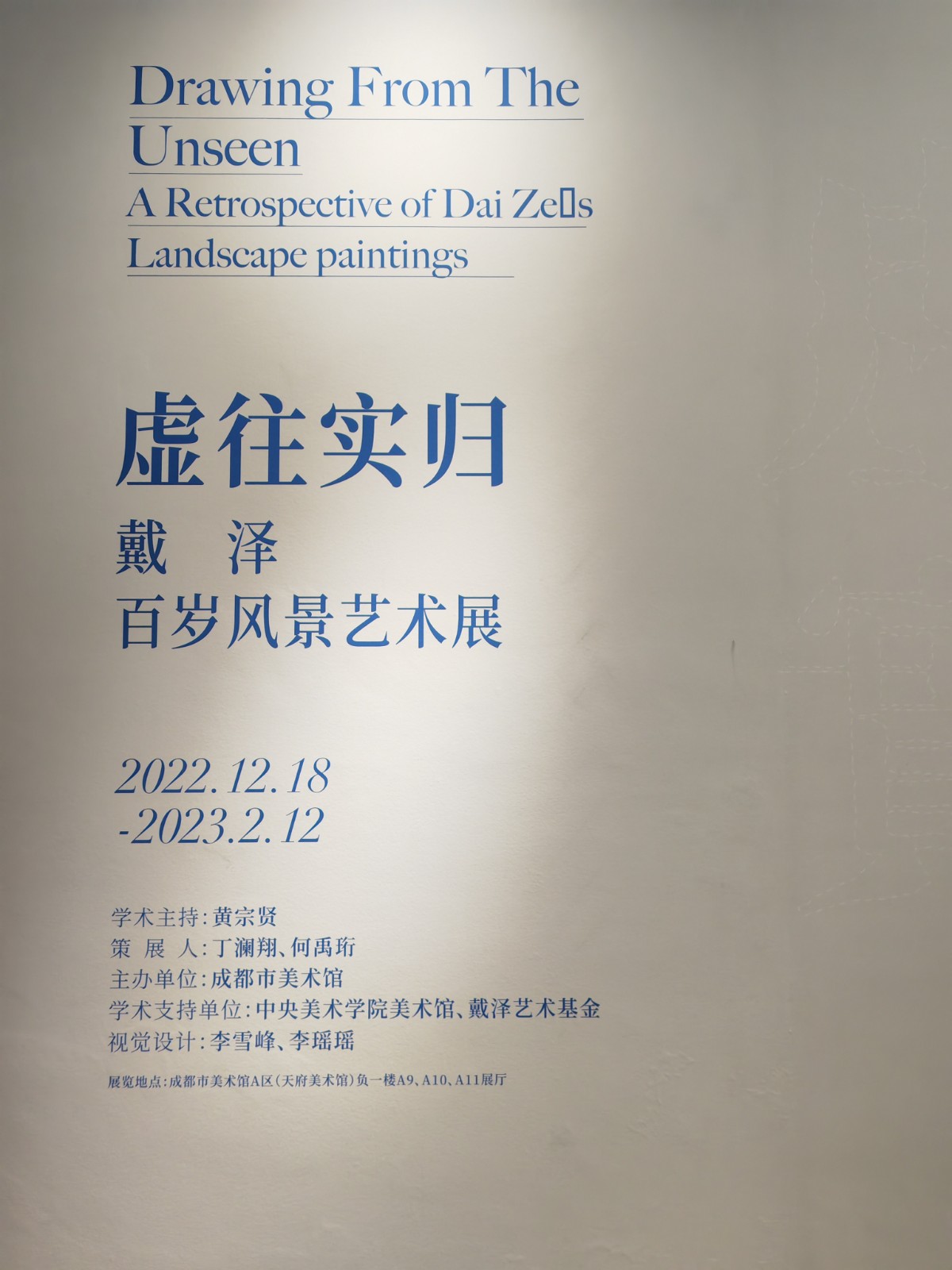



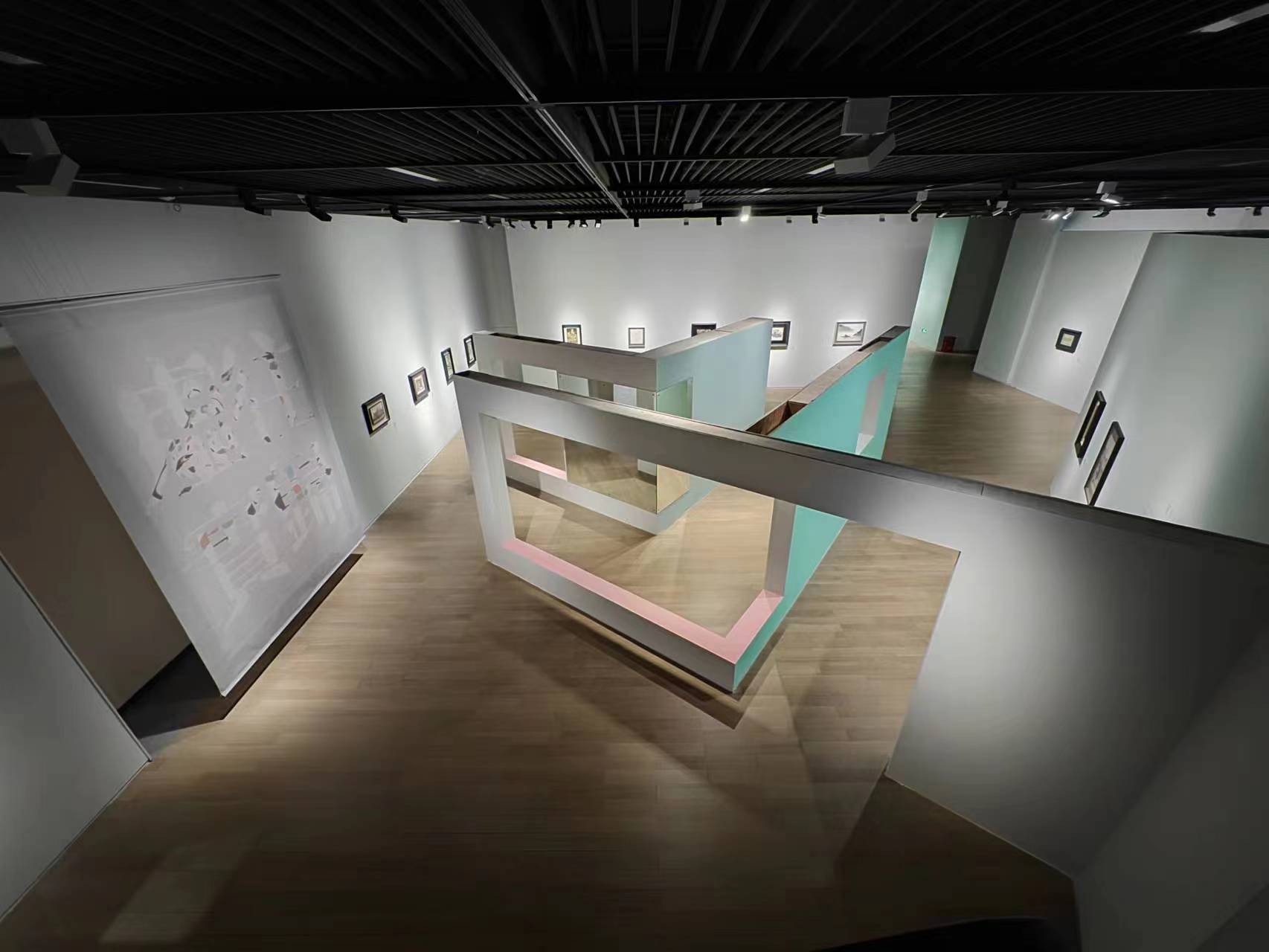 Exhibition View
Exhibition View
Drawing from the Unseen
According to the curator Ding Lanxiang, the curatorial direction of “Drawing from the Unseen: A Retrospective of Dai Ze’s Landscape Paintings” differs from previous exhibitions of works by Dai Ze. First of all, this is the first landscape painting retrospective of Dai Ze and it covers his masterpieces of landscape paintings that spanned more than half a century, half of which are exhibited for the public for the first time; secondly, the location of the exhibition is Chengdu Art Museum, which also makes the exhibition become Dai Ze’s first exhibition in his homeland. At the age of 100, Dai returned to Sichuan to hold a solo exhibition, which is even more significant and what the curatorial concept of this exhibition is based on.

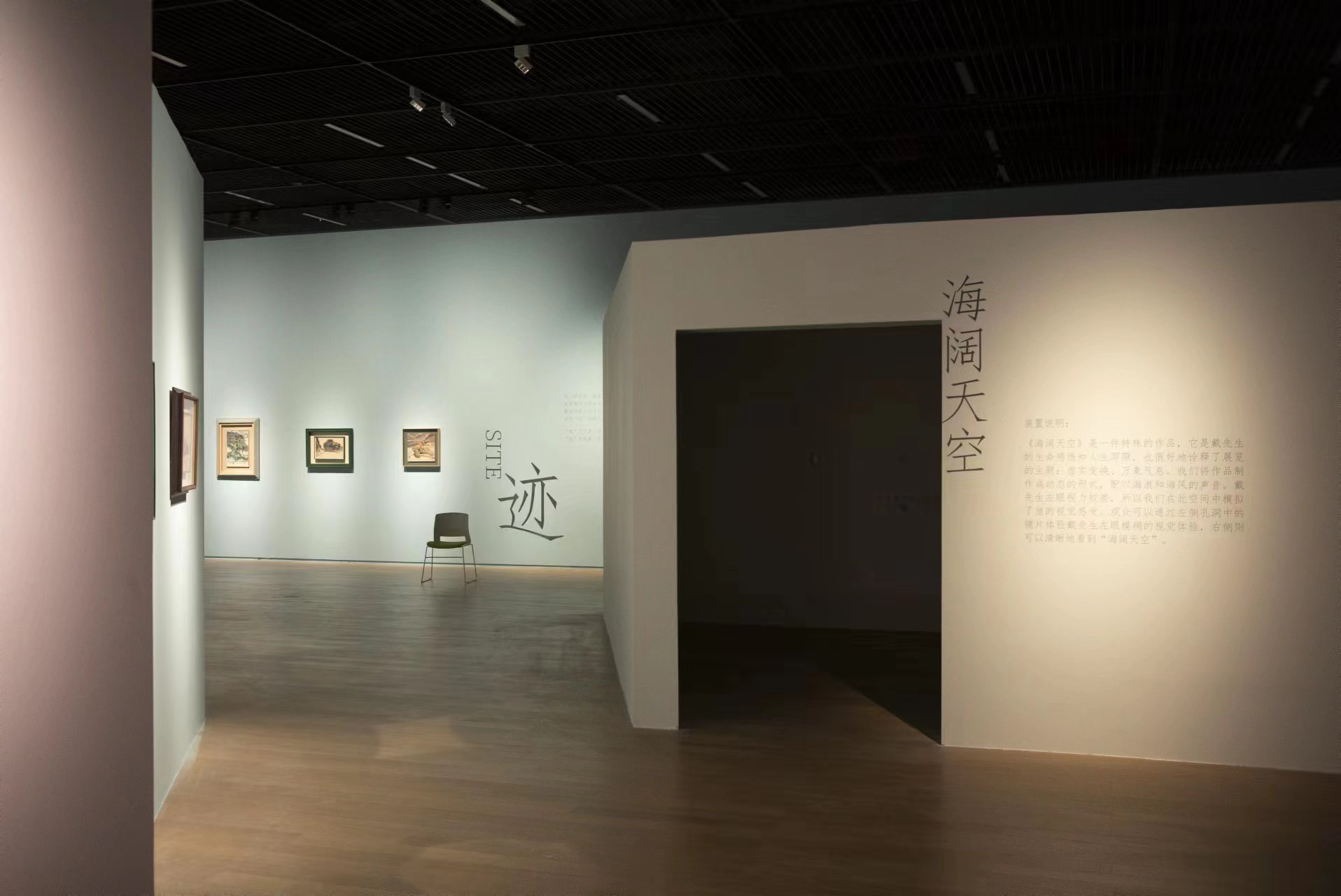
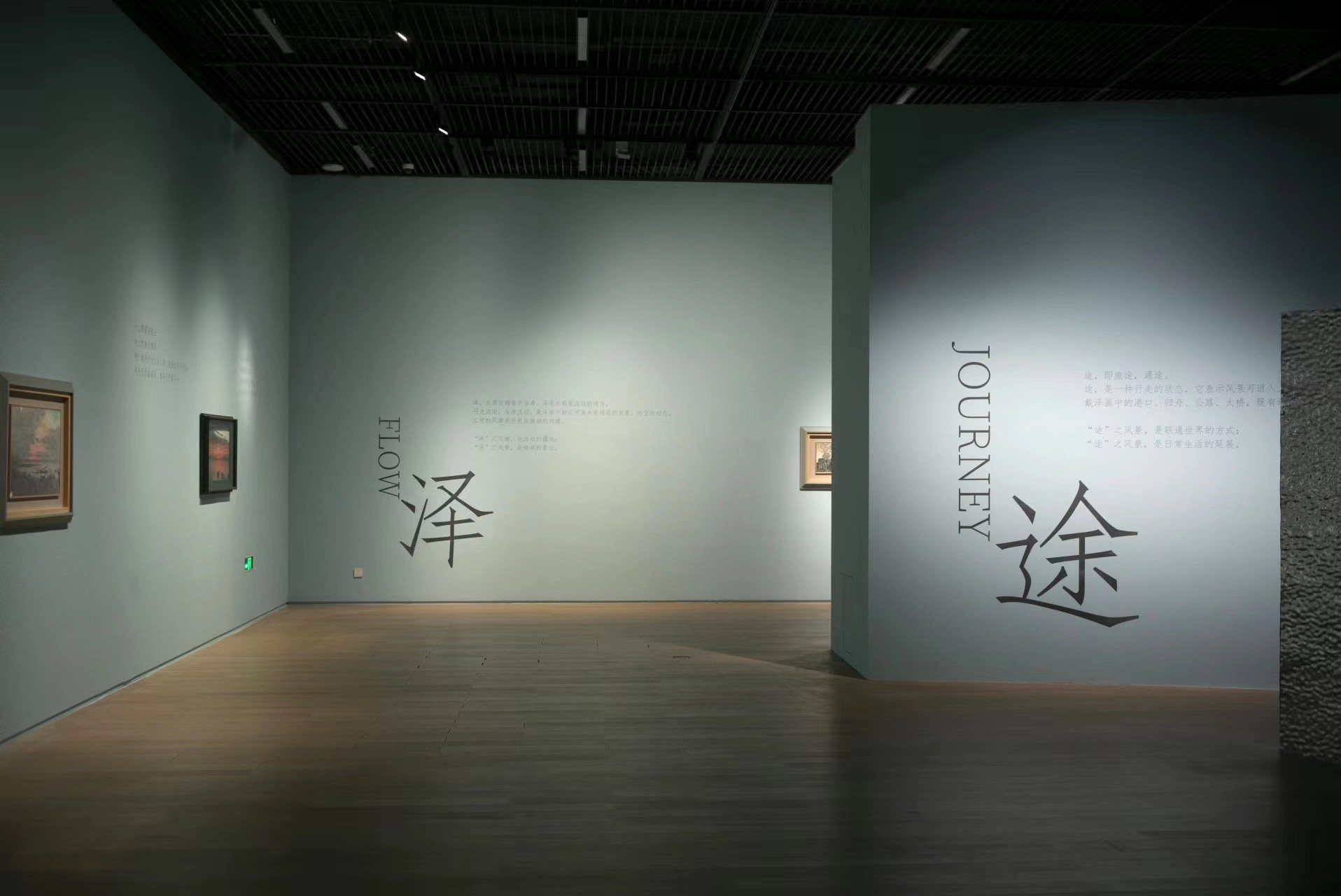
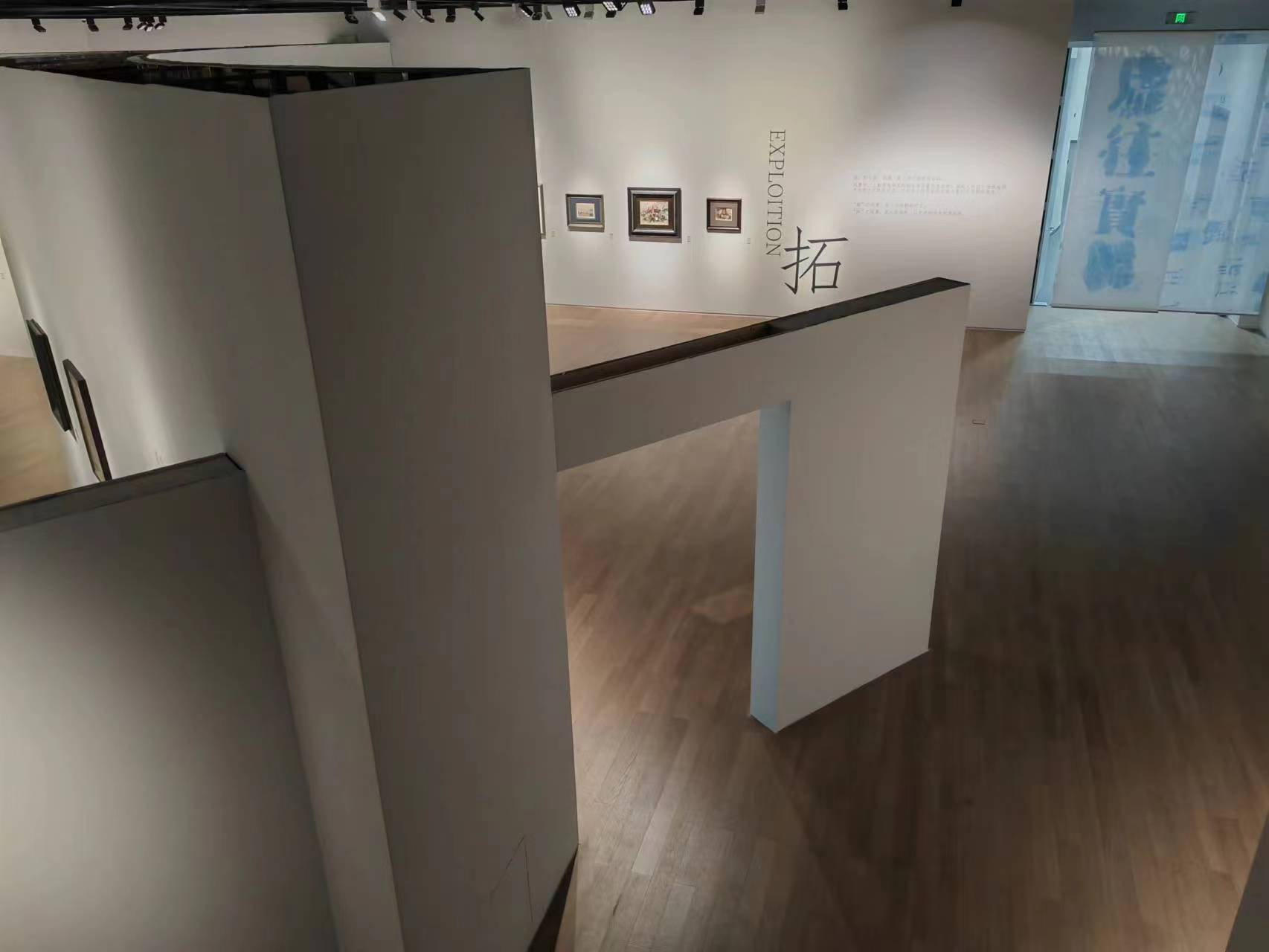 Exhibition View
Exhibition View
The title of the exhibition originated from a little-known fact that the curator learned from Dai’s family at the beginning of the exhibition planning—Mr. Dai has always concealed his eye disease. Due to an accident when he was a child, his vision in his left eye was seriously impaired. He did not tell his family about it until an eye examination in his later years. This meant that his left eye had blurred vision throughout his creative career of over 50 years. He did not choose to have corrective surgery and treatment, but buried it as a secret in his heart, he chose to reconcile himself with the defect, to adapt and identify with it. It also means that, as a painter, it has always been difficult for Dai to obtain a clear visual image.
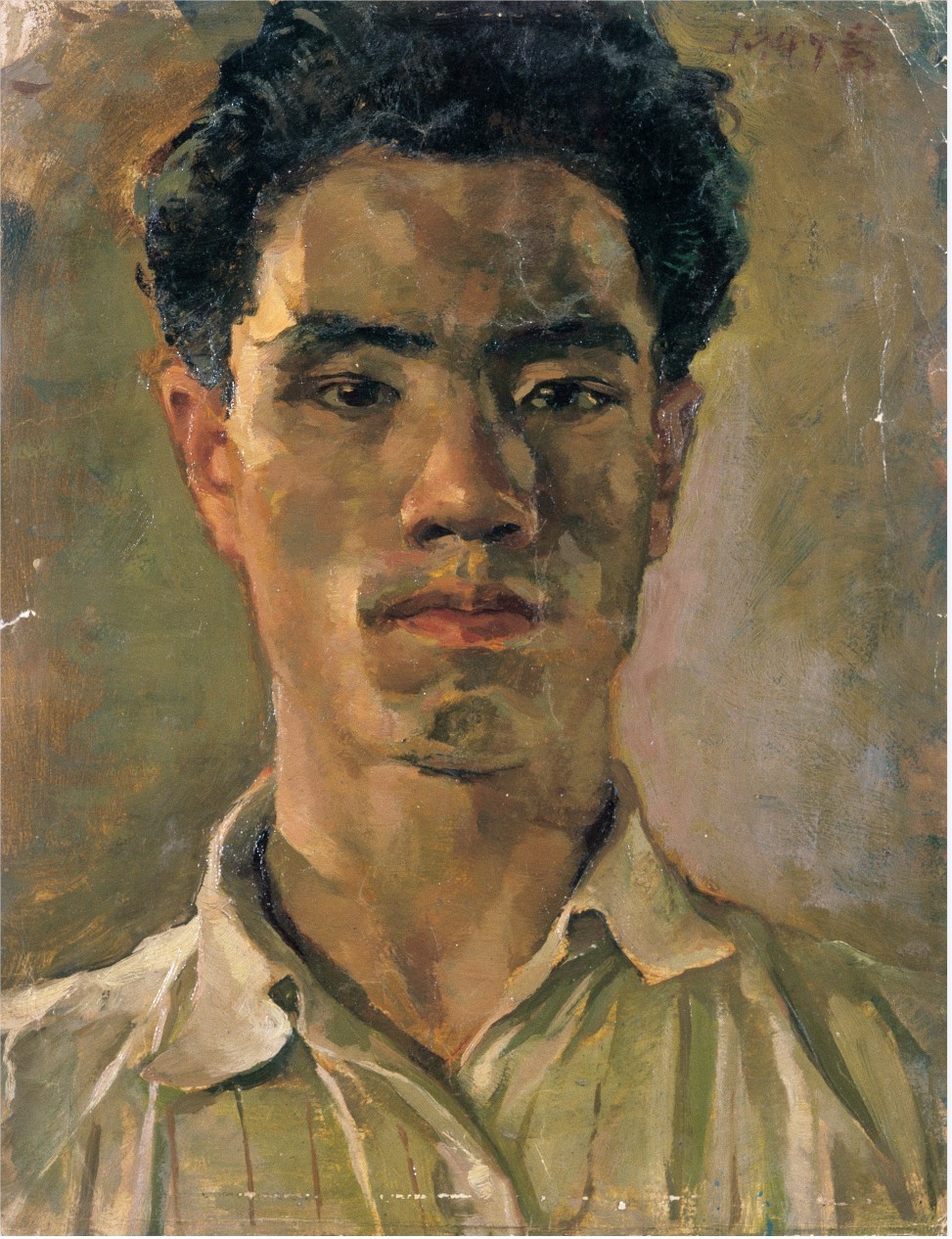
Dai Ze, “Self-Portrait”, 26×34cm, Oil on paper, 1949, private collection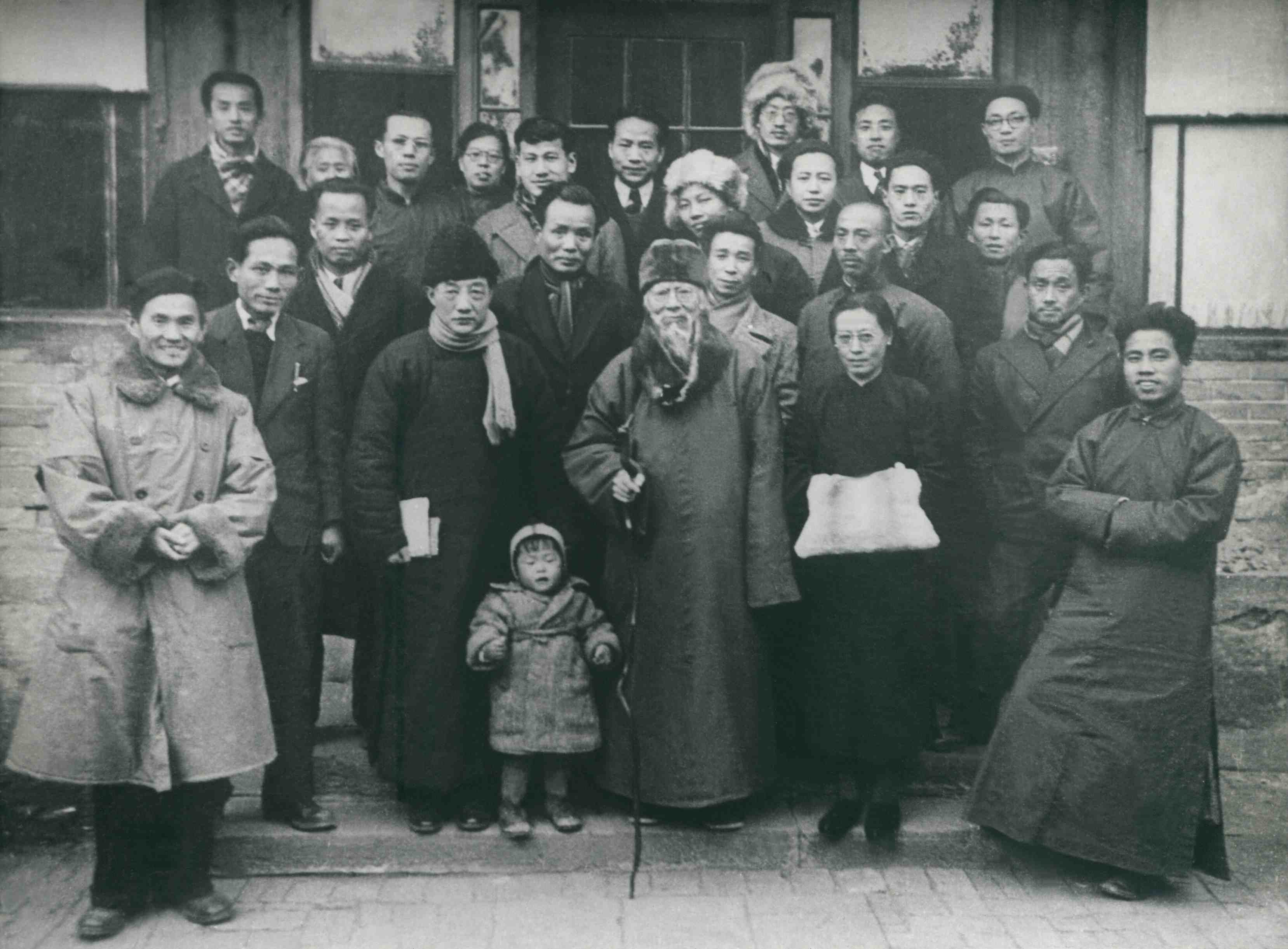 In 1946, colleagues from the Peiping National School of Fine Arts and the Peking Artists Association had photos group at the Peiping National School of Fine Arts. First row from right: first from right Dai Ze, third from right Qi Baishi, fourth from right Xu Beihong; second row from right: third from right Lu Guangzhao, fourth from right Li Keran; third row from right: Dong Xiwen from right.
In 1946, colleagues from the Peiping National School of Fine Arts and the Peking Artists Association had photos group at the Peiping National School of Fine Arts. First row from right: first from right Dai Ze, third from right Qi Baishi, fourth from right Xu Beihong; second row from right: third from right Lu Guangzhao, fourth from right Li Keran; third row from right: Dong Xiwen from right.
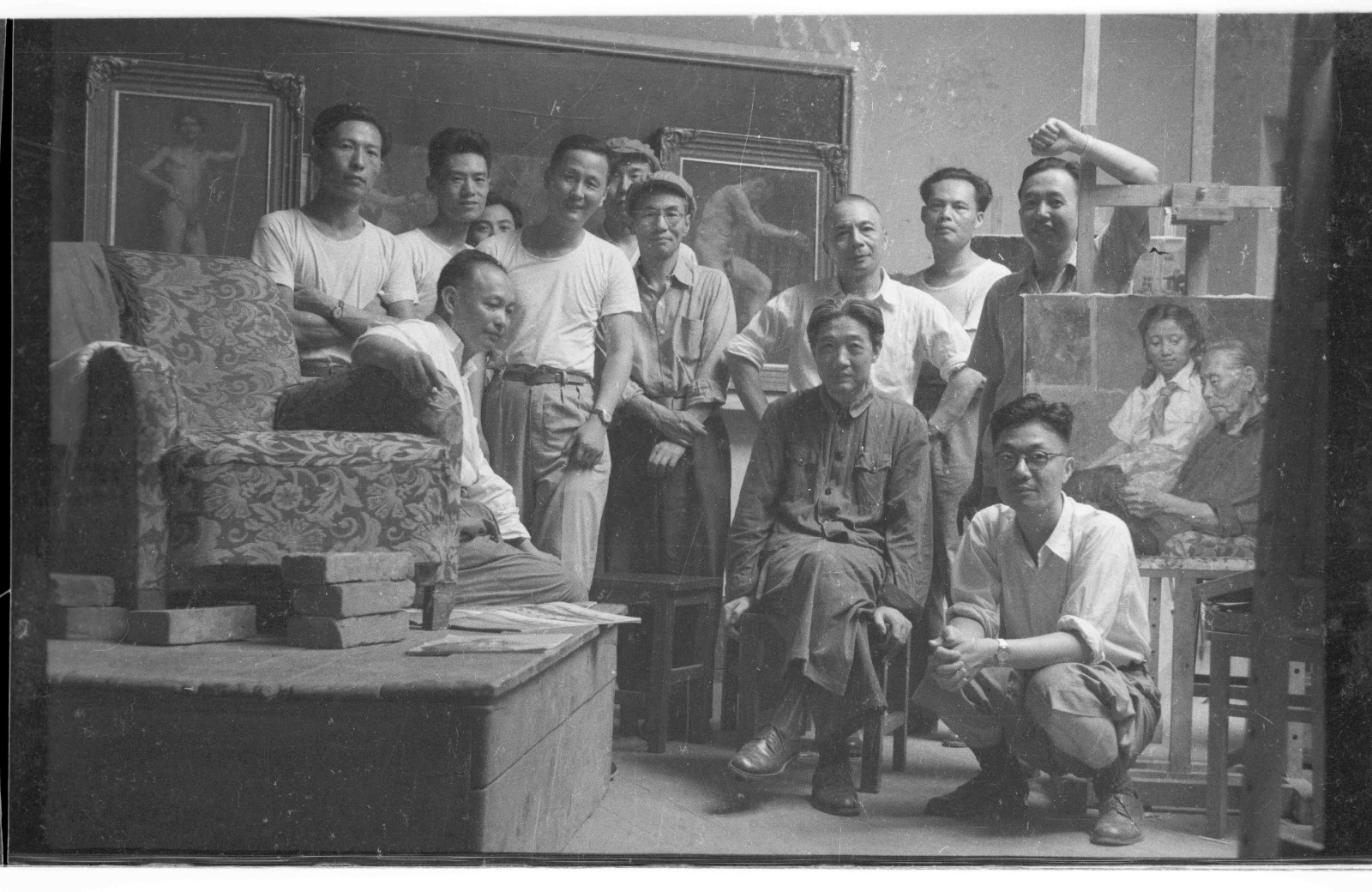 In 1953, Xu Beihong took a group photo with Jiang Feng and others (photographed with Dai Ze’ camera and scanned negatives)
In 1953, Xu Beihong took a group photo with Jiang Feng and others (photographed with Dai Ze’ camera and scanned negatives)
 Dai Ze, who created watercolor sketches in 1957-1958.
Dai Ze, who created watercolor sketches in 1957-1958.
 In 1983, Dai Ze was at the Bayan Har Pass.
In 1983, Dai Ze was at the Bayan Har Pass.
As a staunch practitioner and defender of Mr. Xu Beihong’s artistic thoughts, Dai Ze has always adhered to the realistic artistic concept of “trusting your eyes and painting what you see” in his creations. Due to his eye disease, all he sees are “virtual images”, which also makes the exhibition point to a deeper question that he tries to explore—how Dai Ze achieves a balance between virtuality and reality, interior and exterior, body and nature through his art .
The theme of the exhibition “Drawing from the Unseen” was born from this. In “Zhuangzi: Dechong Fu”, Chang Ji asked Confucius : “Students went to study with empty head, but they can return with substantial knowledge. Even though there is an inherent teaching without words, and is it formless but is constituted in mind?” Here, “going with empty head represents a kind of virtual, which is a metaphor for Dai Ze’s out-of-focus view on objects; “returning with substantial knowledge” means that Dai Ze has gained a grasp of the reality of nature through a personal experience and brushwork. “Drawing from the Unseen” here is a realm of life and a sublimation of aesthetics, which not only includes the traditional Chinese view of nature, but also the “invisible mind” conveyed by Dai Ze in his landscape paintings. Perhaps as Mr. Dai said in his preface, although he is almost blind in one eye and suffers from a severe cataract in the other, “it seems that a new window has opened in my heart, and I can see more profoundly and simply.”[1]
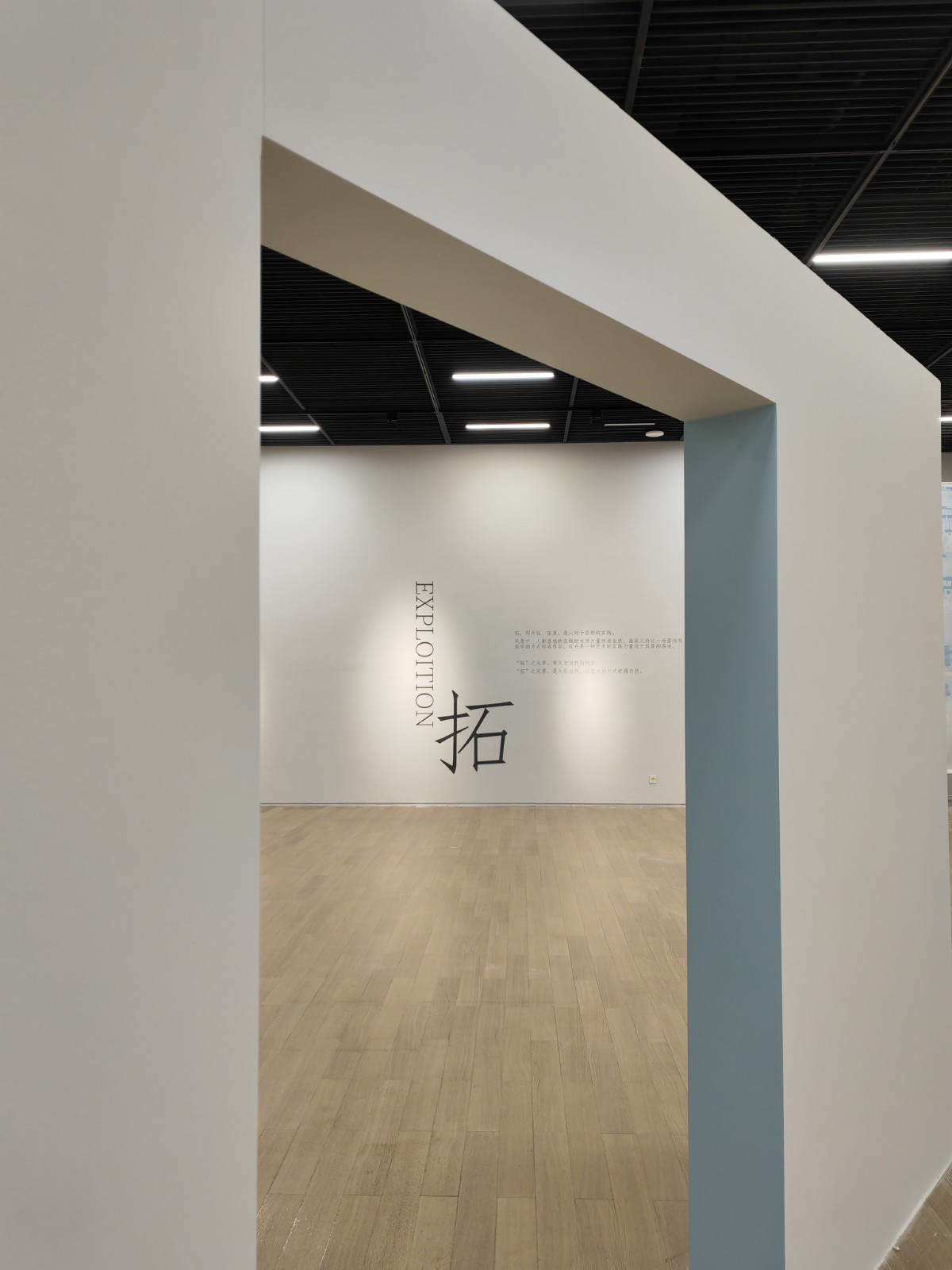

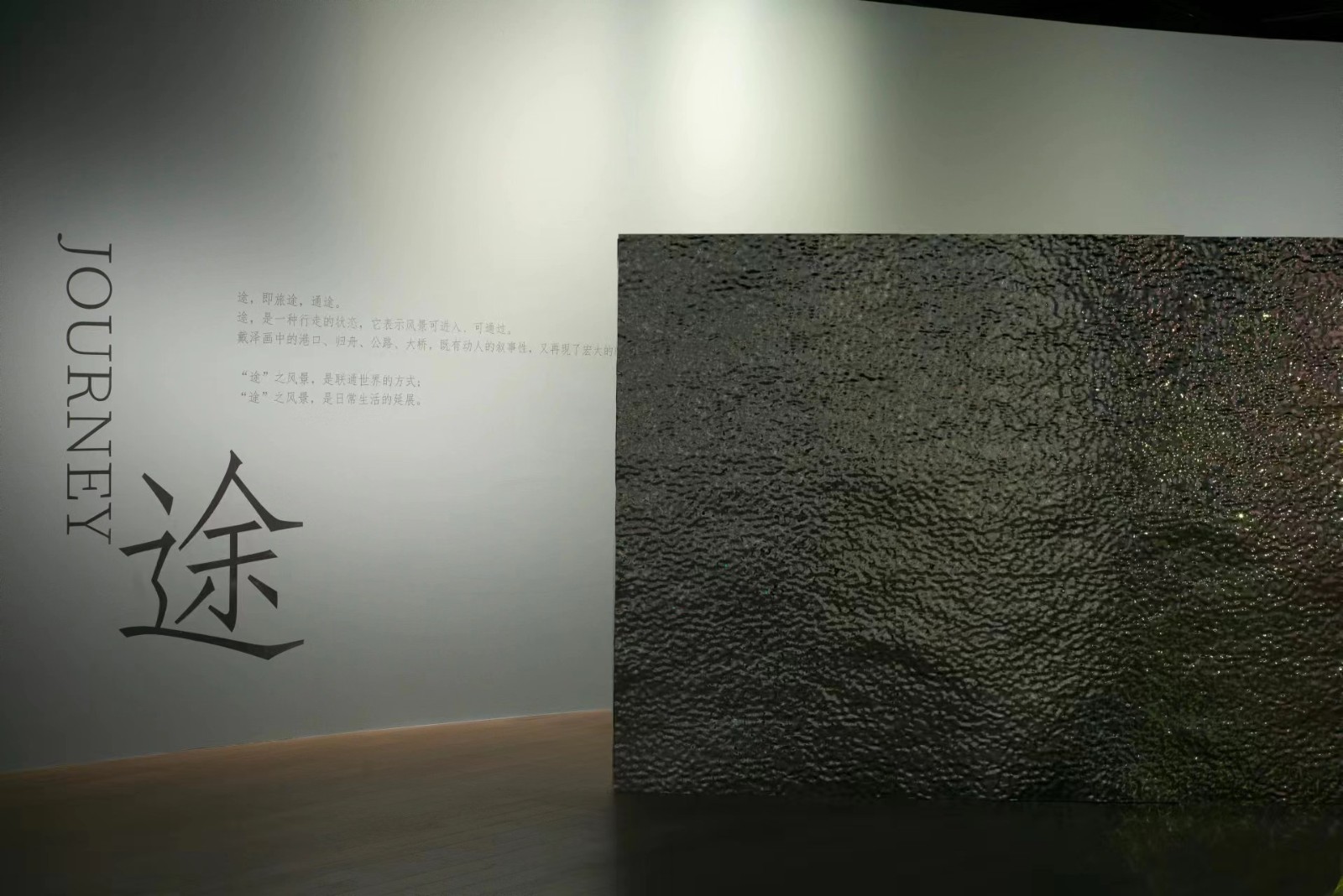
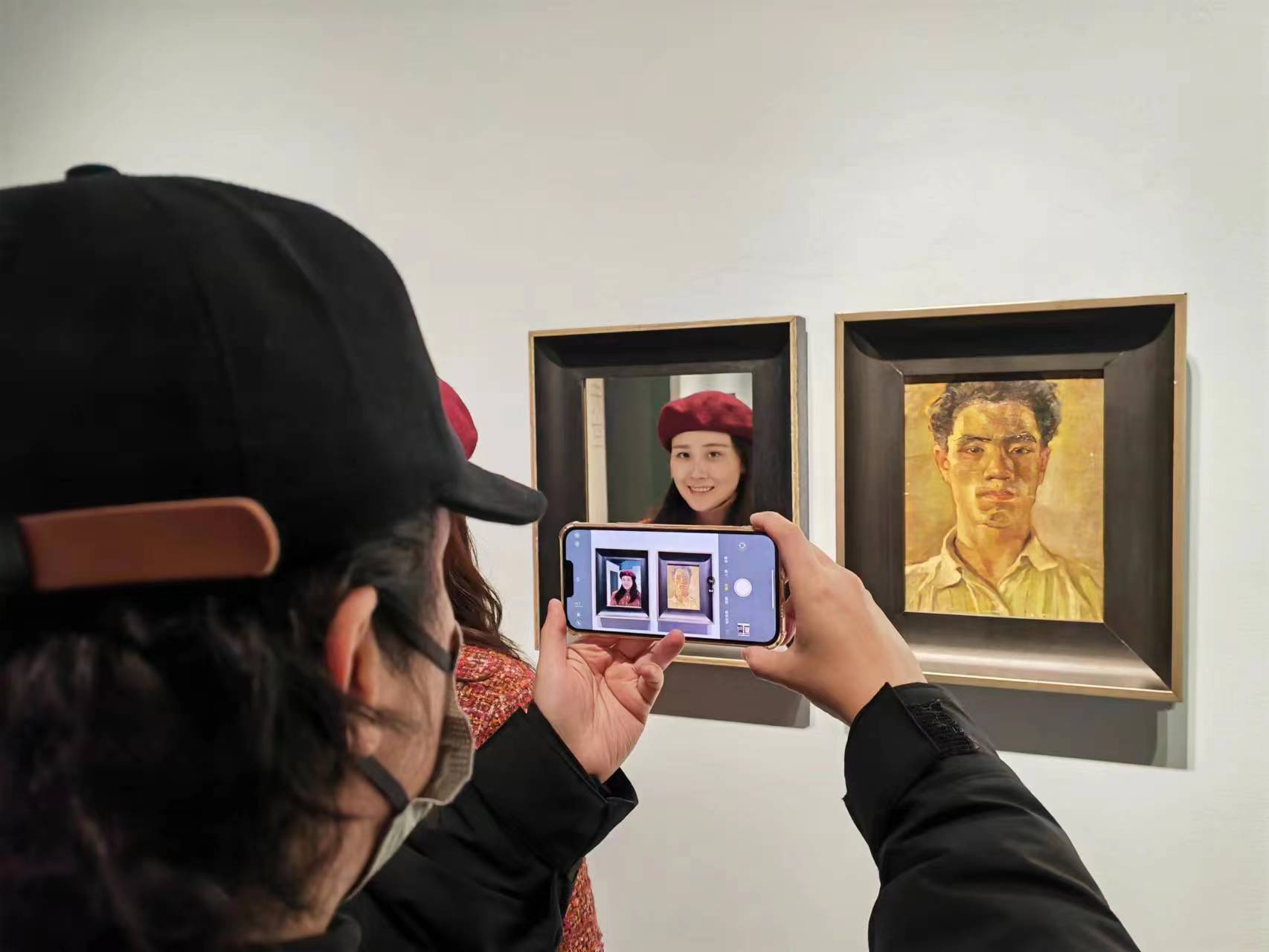 Exhibition View
Exhibition View
“A painter observes and feels with his eyes. What does poor eyesight mean to a painter? Commonly speaking, it will definitely have a lot of negative effects on his paintings. But in the history of art, many painters lost their eyesight in their later years, they instead felt more relaxed and became more enlightened in art.” [2] From the curator’s point of view, although it is impossible to accurately know the influence of eyesight on Dai’s paintings, it reminds people of another way to understand his paintings, that is, the loose, fuzzy, and abstract parts of his paintings can be understood as the direct presentation of his visual perception. Thus the audience can approach Dai’s artistic concept of “painting what you see” from a new perspective.
Painting While Travelling
By breaking through the general structure of the conventional retrospective exhibitions based on the staged narrative of the artist’s career, this exhibition focuses on the display of Dai Ze’s landscape paintings. It is divided into eight chapters, which are refined and distinguished with concise titles. In the prologue of the exhibition, “virtual image” is the entry point of the exhibition as a whole. Through optical devices and text, the viewer is encouraged to firstly experience the visual discomfort caused by the artist’s visual impairment which triggers and touches the audience’s understanding of what are “virtual” and “reality.”
In the exhibition unit, according to the content of the landscape paintings by Mr. Dai Ze, it is divided into six relatively independent exhibition sections: “Site”, “Flow”, “Journey”, “Exploration”, “Homeland”, “Wildness”. “Site” refers to historical sites and scenic spots, and it is a place where history is stored. This chapter shows the landscape paintings of Dai Ze’s visits to famous places of interest and revolutionary venues in different periods. After 1946, Dai Ze was invited by Xu Beihong to serve as Xu’s teaching assistant at the Peiping National School of Fine Arts, then after that he started his career in the north. The “Tiananmen” created by the artist in 1952 presents a vivid scene after the founding of People’s Republic of China, and it also records Dai Ze’s “drifting life in Beijing” full of laughter and tears.
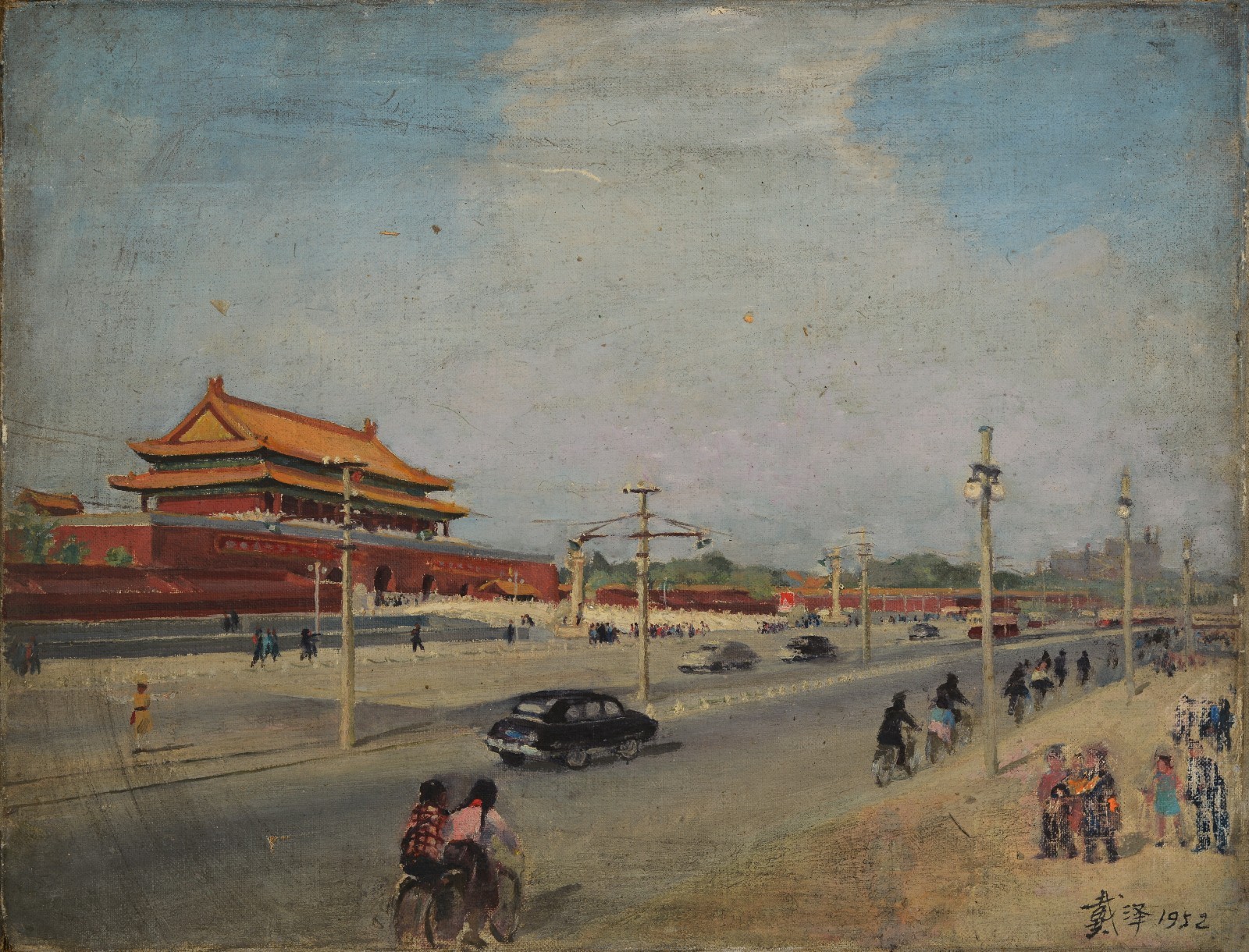 Dai Ze, “Tiananmen”, 40.5×52.5cm, Oil on canvas, 1952, private collection
Dai Ze, “Tiananmen”, 40.5×52.5cm, Oil on canvas, 1952, private collection Dai Ze, “Completion of Beijing Railway Station”, 35.1×52.7cm, Chinese painting on paper, 1995, private collection
Dai Ze, “Completion of Beijing Railway Station”, 35.1×52.7cm, Chinese painting on paper, 1995, private collection
In 1963, the 41-year-old artist was sent to Tibet by the China Artists Association to take a residence. Before entering Tibet, he stayed in Chengdu for a short time and finished a series of colored ink works, “Zhaojue Temple in Chengdu” and “Dujiangyan” that he finished in 1963 show Dai Ze’s sketches of Chengdu’s historical landscapes before he entered Tibet.
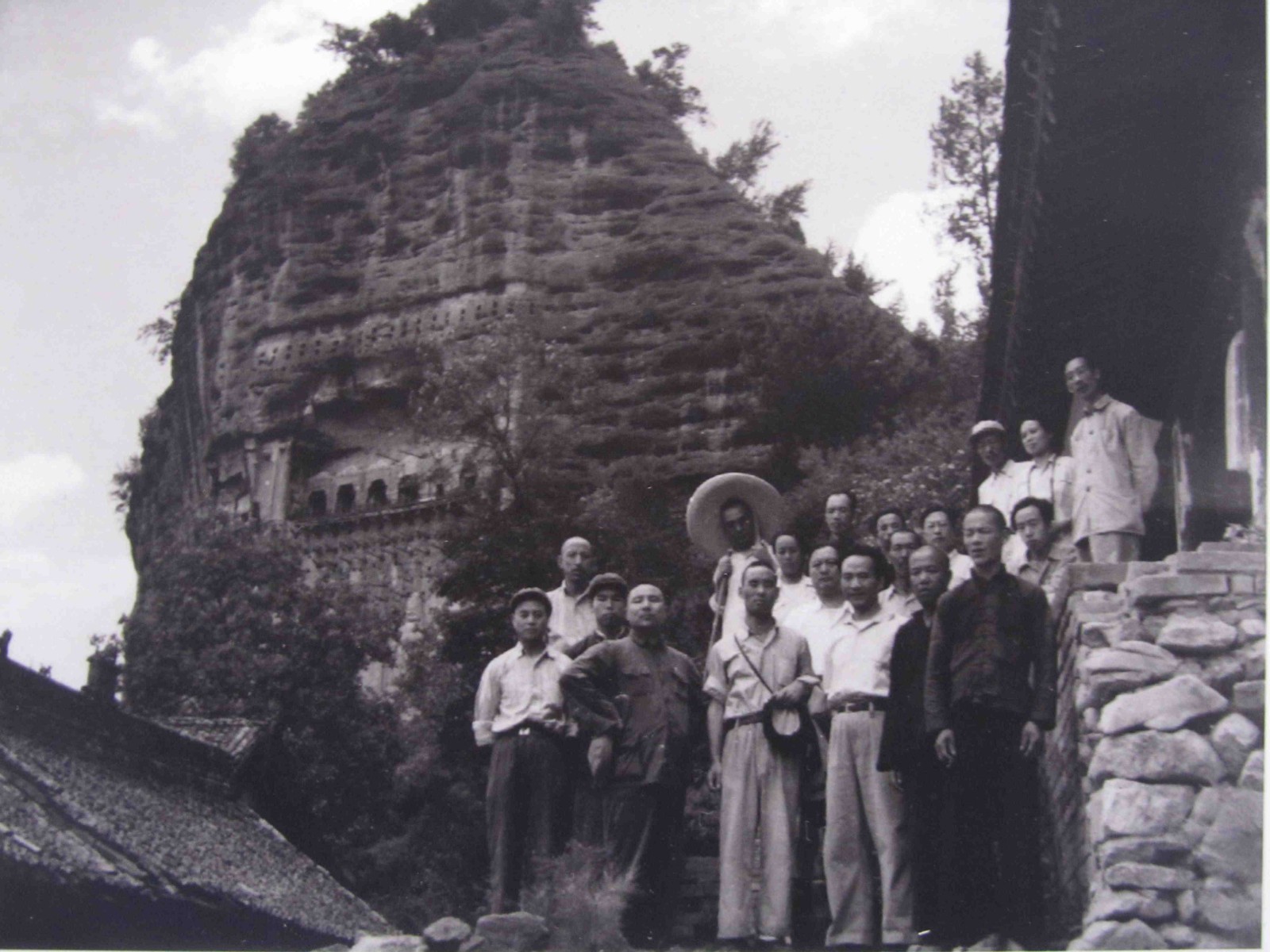 In 1953, a group photo of the Maijishan Exploration Team, led by Wu Zuoren
In 1953, a group photo of the Maijishan Exploration Team, led by Wu Zuoren

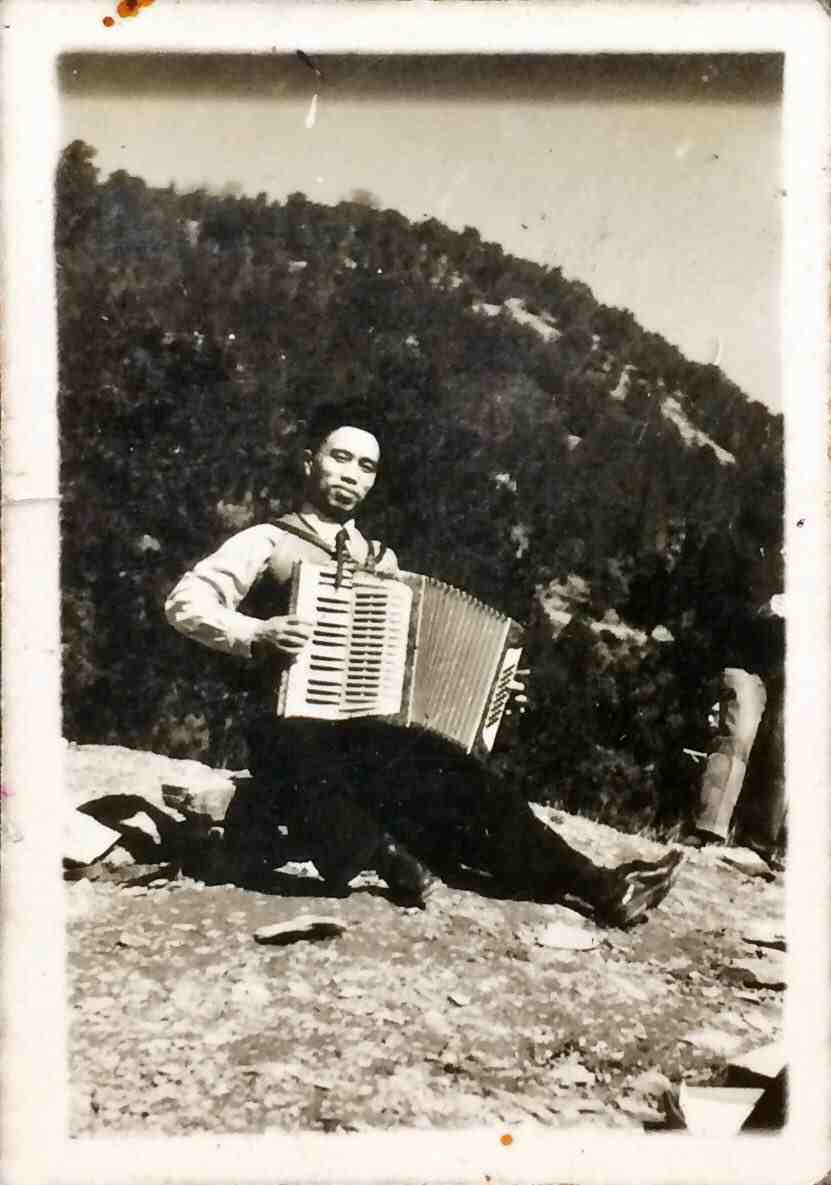
In June 1953, Dai Ze joined the Maijishan Exploration Group Dai Ze in Tibet in 1964
Dai Ze in Tibet in 1964
The landscape paintings created by Dai Ze during his travels selected for the exhibition are like the media of culture and history. Dai Ze transforms these historical places that he watched closely and sketched from life into landscapes in his paintings, and creates landscapes in the unity of history and aesthetics.

Dai Ze, “Zhaojue Temple in Chengdu”, 29×46cm, Chinese painting on paper, 1963, private collection
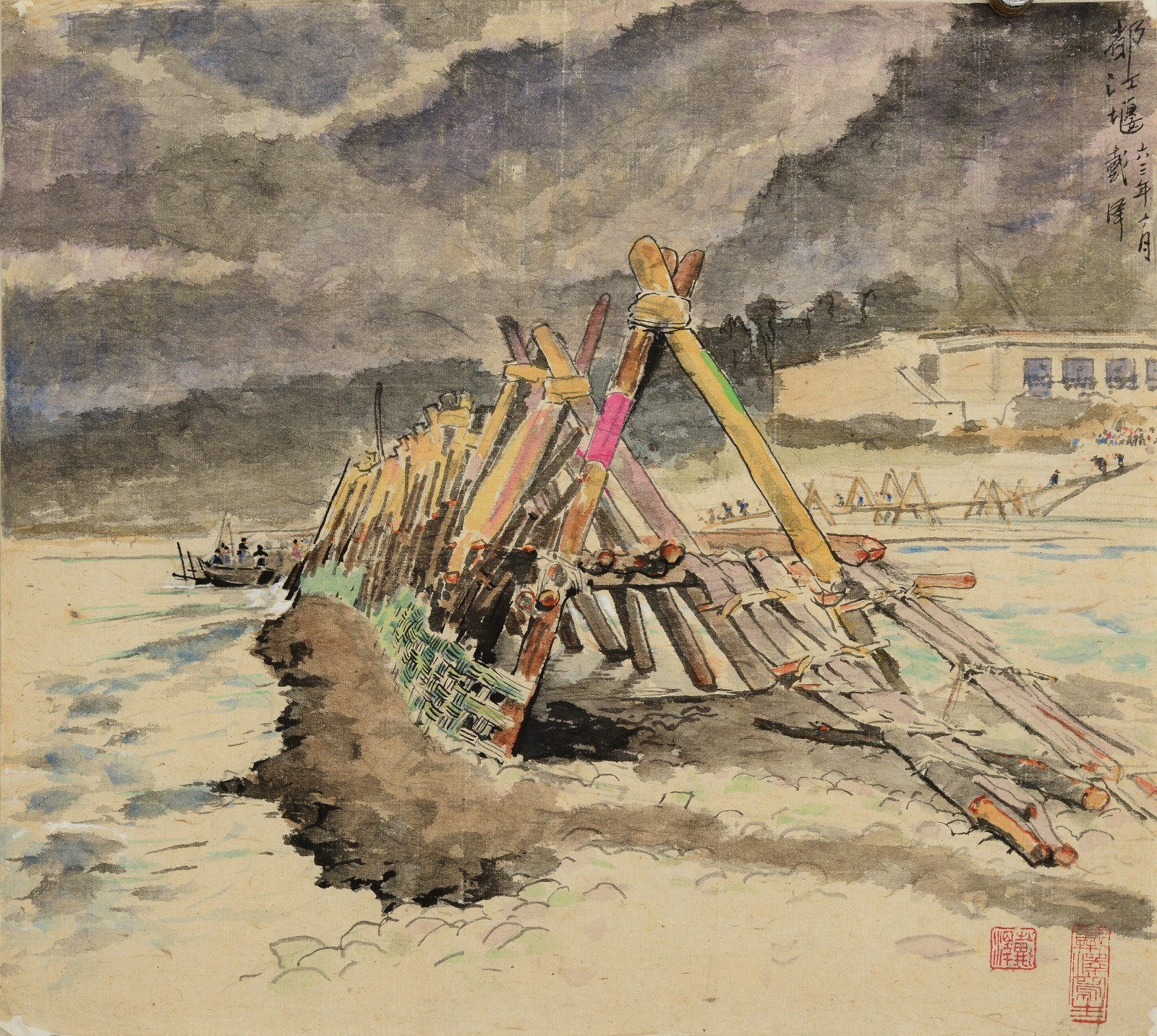 Dai Ze, “Dujiangyan”, 43×38.5cm, Chinese painting on paper, 1963, private collection
Dai Ze, “Dujiangyan”, 43×38.5cm, Chinese painting on paper, 1963, private collection
 Dai Ze, “Yan’an Pagoda Mountain”, 40×54.5cm, Oil on paper, 1974, private collection
Dai Ze, “Yan’an Pagoda Mountain”, 40×54.5cm, Oil on paper, 1974, private collection
The second chapter of the exhibition, “Flow”, separates Dai Ze’s landscape creations that express rivers, lakes and seas into a unit. “Flow”, that is, the place where water accumulates and flows, echoes the Site in the previous chapter, which is the symbol of the flowing territory and spirit, implying the passage of history and the dynamics of time and space. Nature has always been Dai Ze’s teacher. Just as Wei Qimei summed up and described, Dai Ze “takes nature as his teacher and realism as his authority. From the point of view of nature, he looks at it seriously and expresses the image he feels sincerely. The more sincere he feels for nature, the more abundant nature will give him.”[3]
 Dai Ze, “Dalian Port”, 52.5×37cm, Oil on paper, 1961, private collection
Dai Ze, “Dalian Port”, 52.5×37cm, Oil on paper, 1961, private collection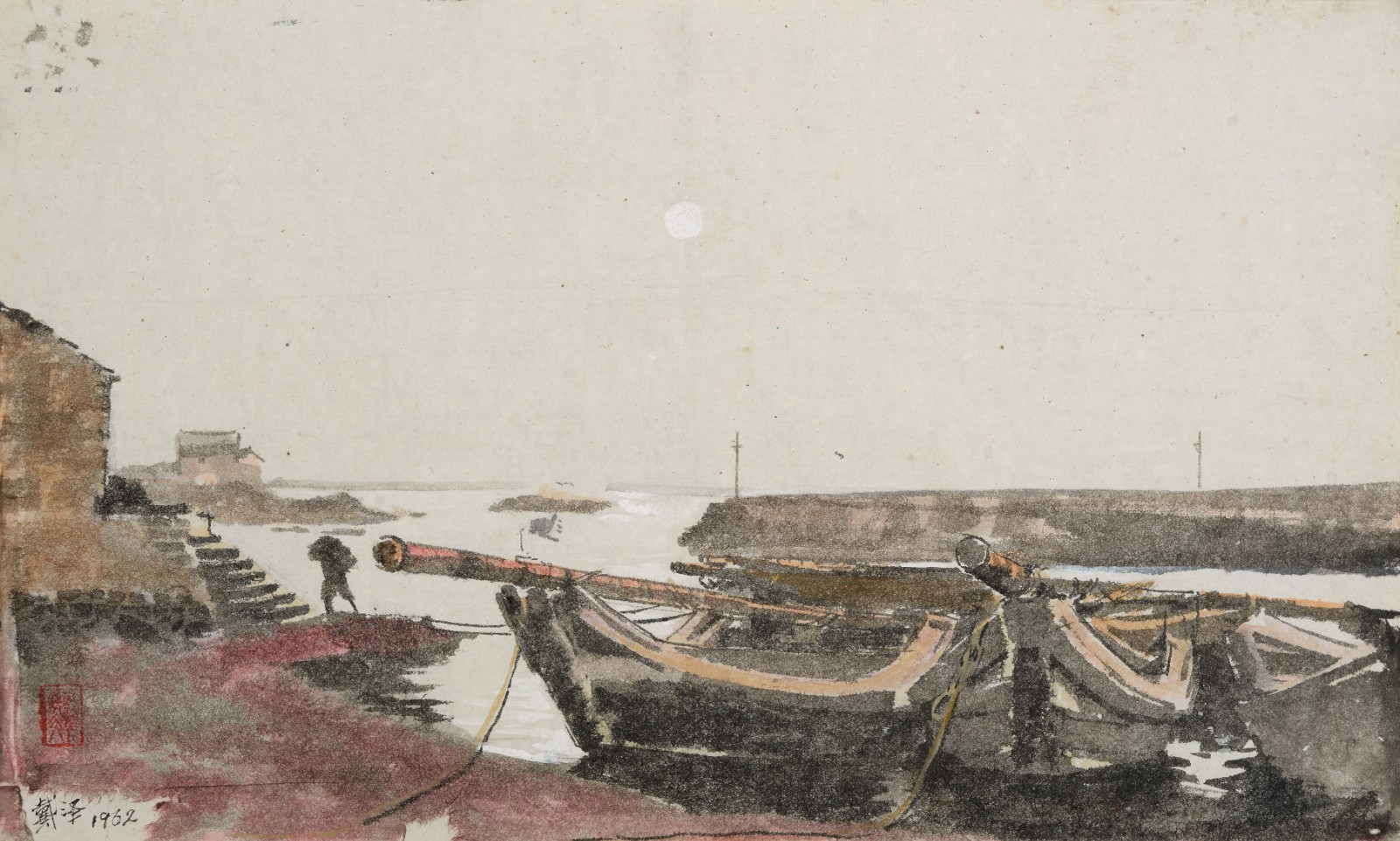 Dai Ze, “Night”, 47×28.5cm, Chinese painting on paper, 1962, private collection
Dai Ze, “Night”, 47×28.5cm, Chinese painting on paper, 1962, private collection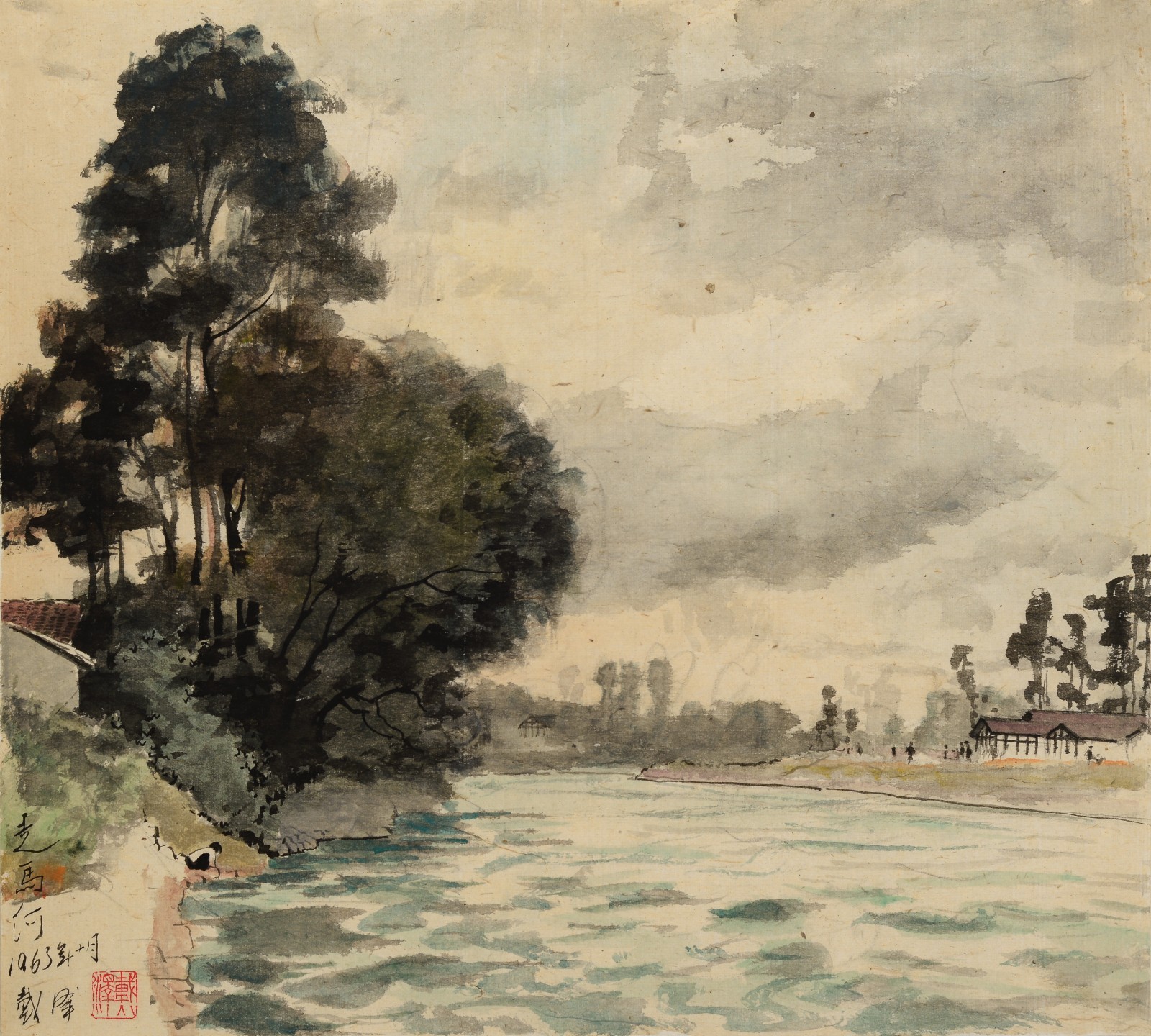 Dai Ze, “Zouma River in Chengdu”, 43×39cm, Chinese painting on paper, 1963, private collection
Dai Ze, “Zouma River in Chengdu”, 43×39cm, Chinese painting on paper, 1963, private collection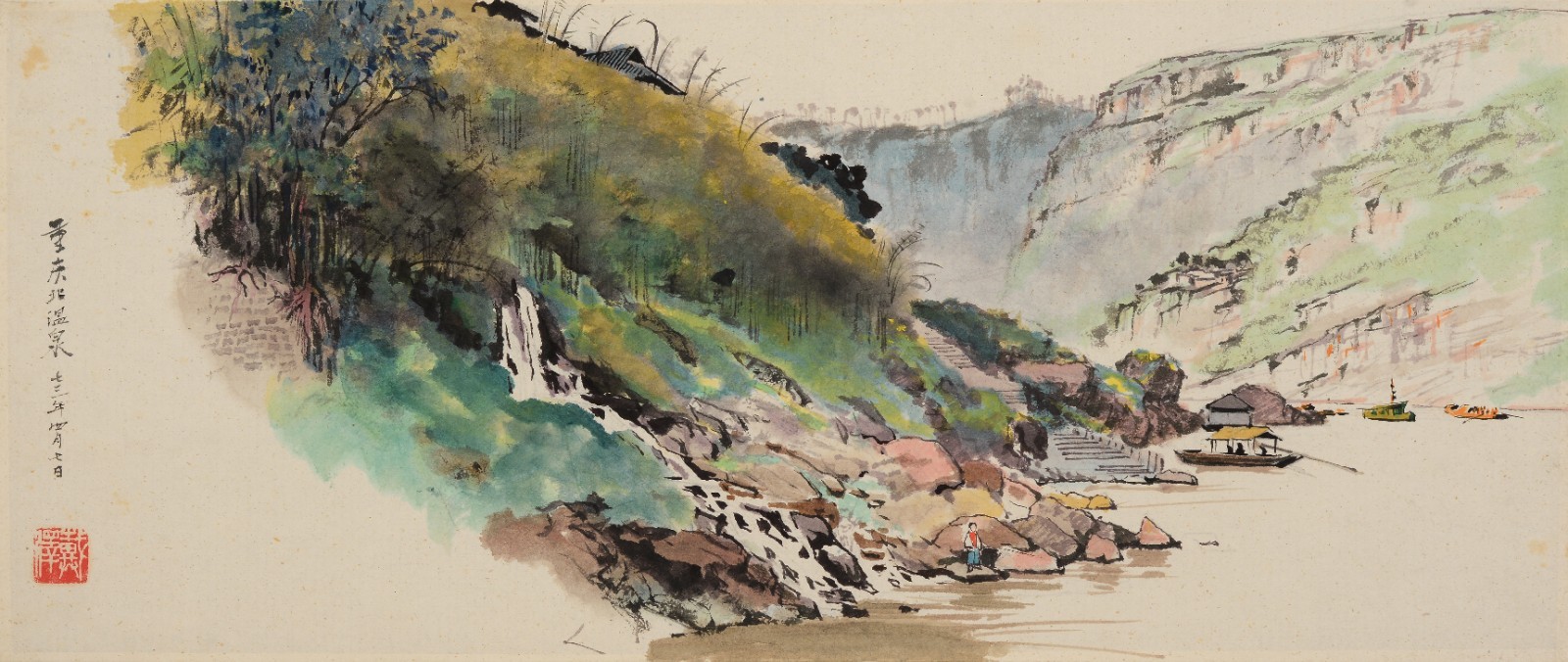 Dai Ze, “North Hot Spring in Chongqing”, 51×22.5cm, Chinese painting on paper, 1973, private collection
Dai Ze, “North Hot Spring in Chongqing”, 51×22.5cm, Chinese painting on paper, 1973, private collection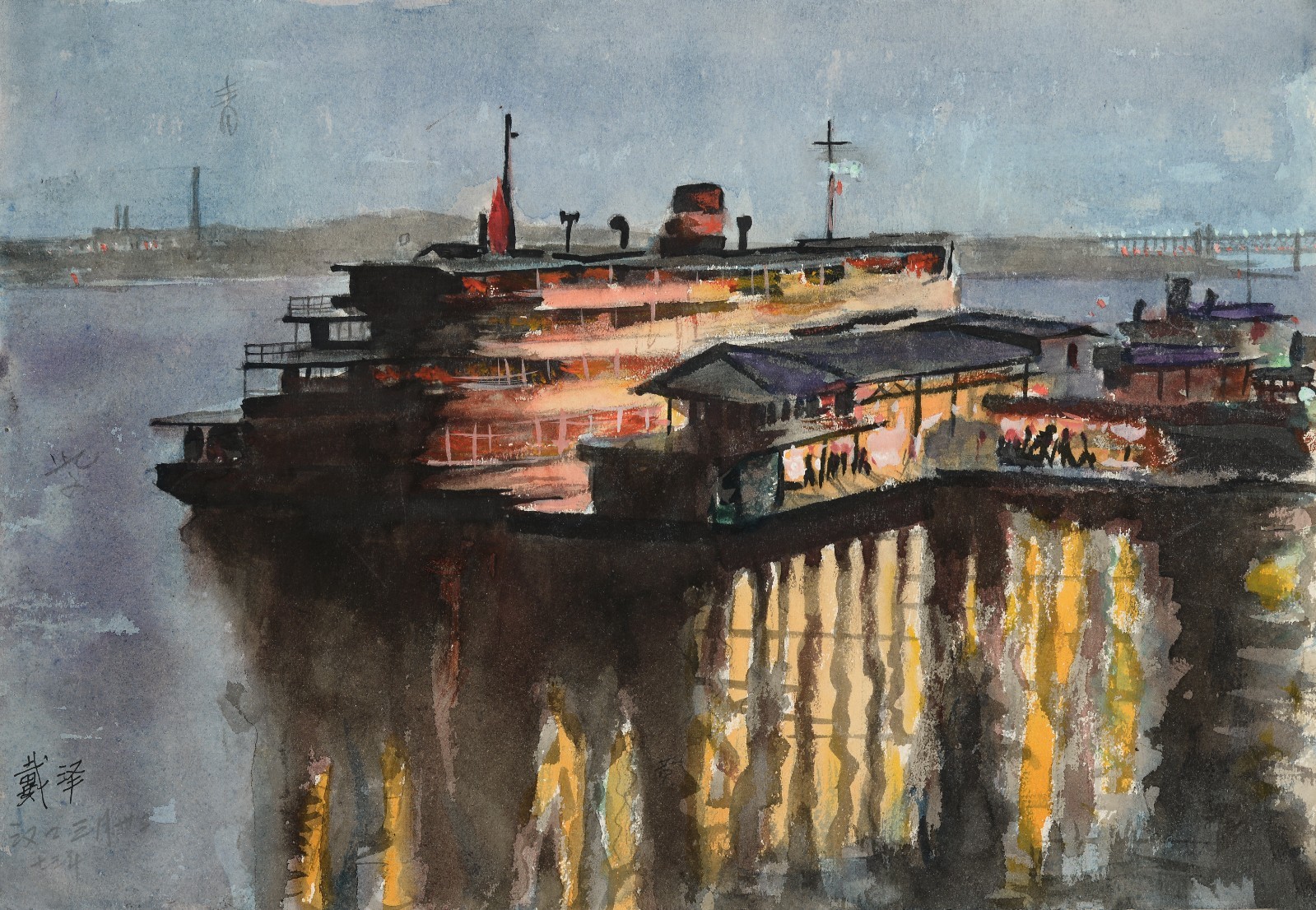 Dai Ze, “Night Mooring in Hankou”, 27×39cm, Watercolor on paper, 1973, private collection
Dai Ze, “Night Mooring in Hankou”, 27×39cm, Watercolor on paper, 1973, private collection
Dai Ze grew up by the Yangtze River in Yunyang, Sichuan, where the wharf scene, life and scenery left Dai Ze with an extremely vivid and beautiful childhood impression. He often uses rich colors and dynamic brushstrokes to describe his closeness to “water.” Dai Ze adopts rich forms, using colored ink, watercolor, oil painting and other media to express the rivers, lakes and seas in Dalian, Chengdu, Chongqing, Hankou and other places he visited and saw with his eyes. History goes by, life flows, and the flow scenery in Dai Ze’s works are like a continuous image. In the changes of different scenes, there is a hidden process of building the national spirit.
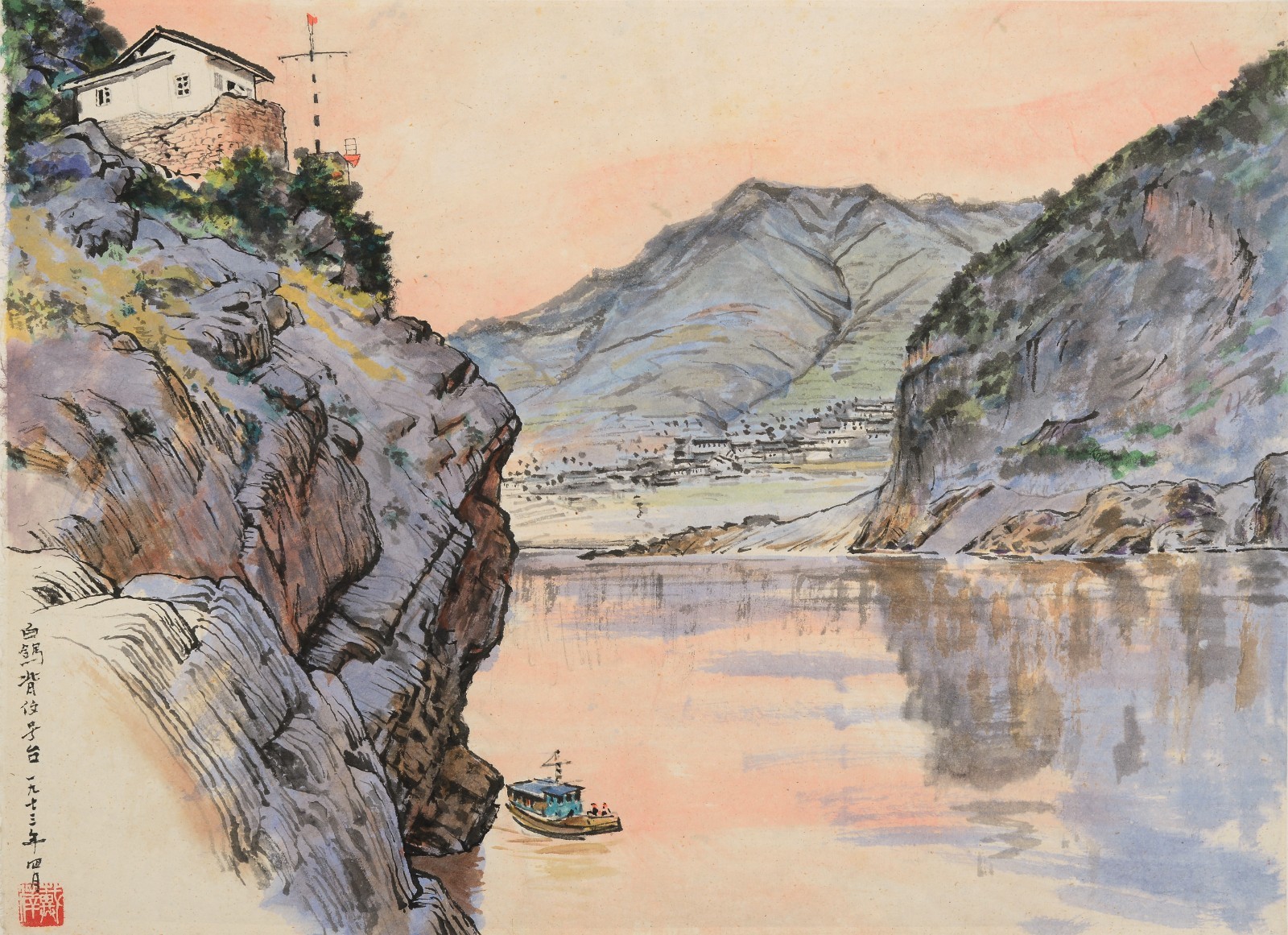 Dai Ze, “Three Gorges”, 53×39cm, Chinese painting on paper, 1973, private collection
Dai Ze, “Three Gorges”, 53×39cm, Chinese painting on paper, 1973, private collection
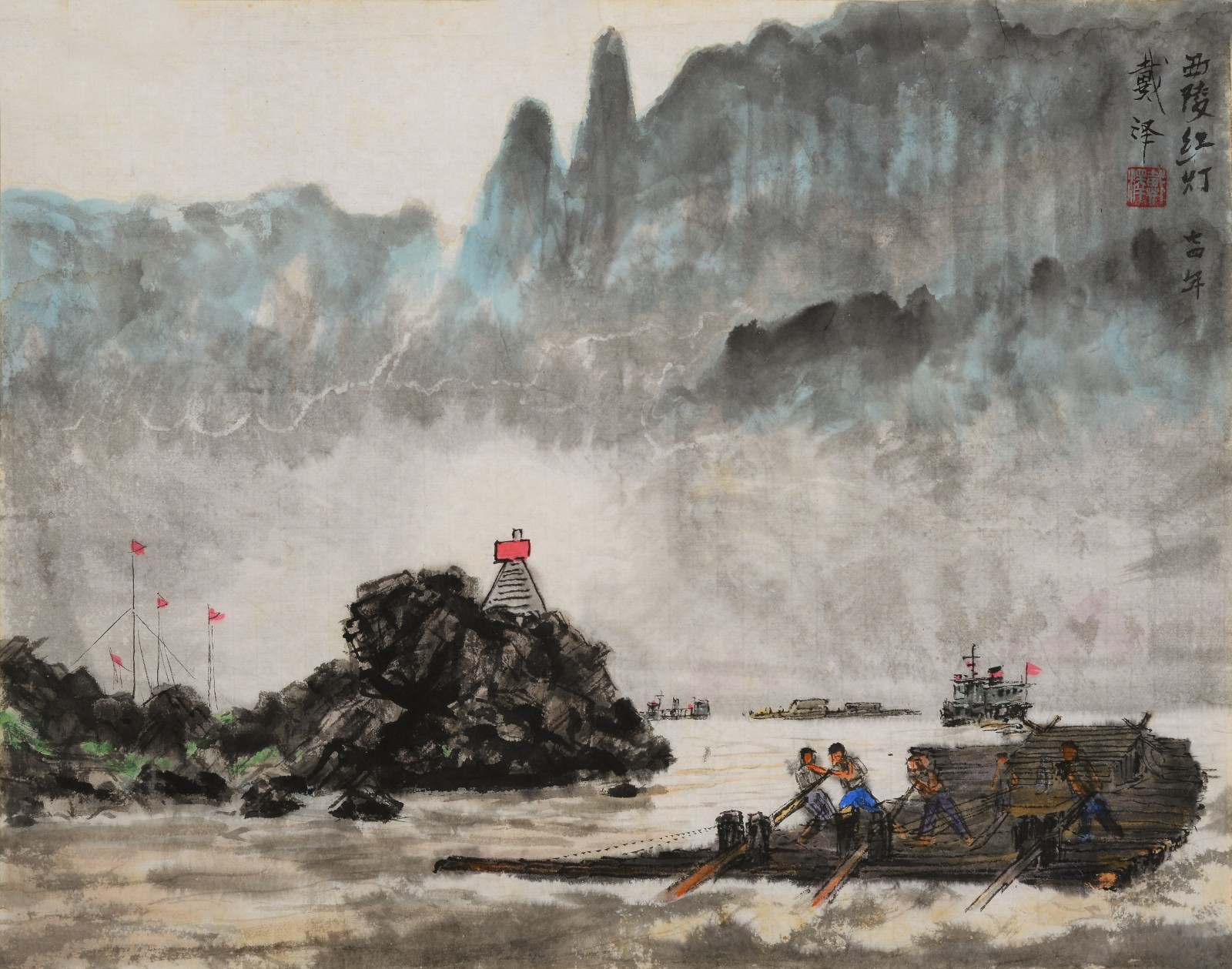 Dai Ze, “Xiling Red Lantern”, 45.5×35.5cm, Chinese painting on paper, 1974, private collection
Dai Ze, “Xiling Red Lantern”, 45.5×35.5cm, Chinese painting on paper, 1974, private collection
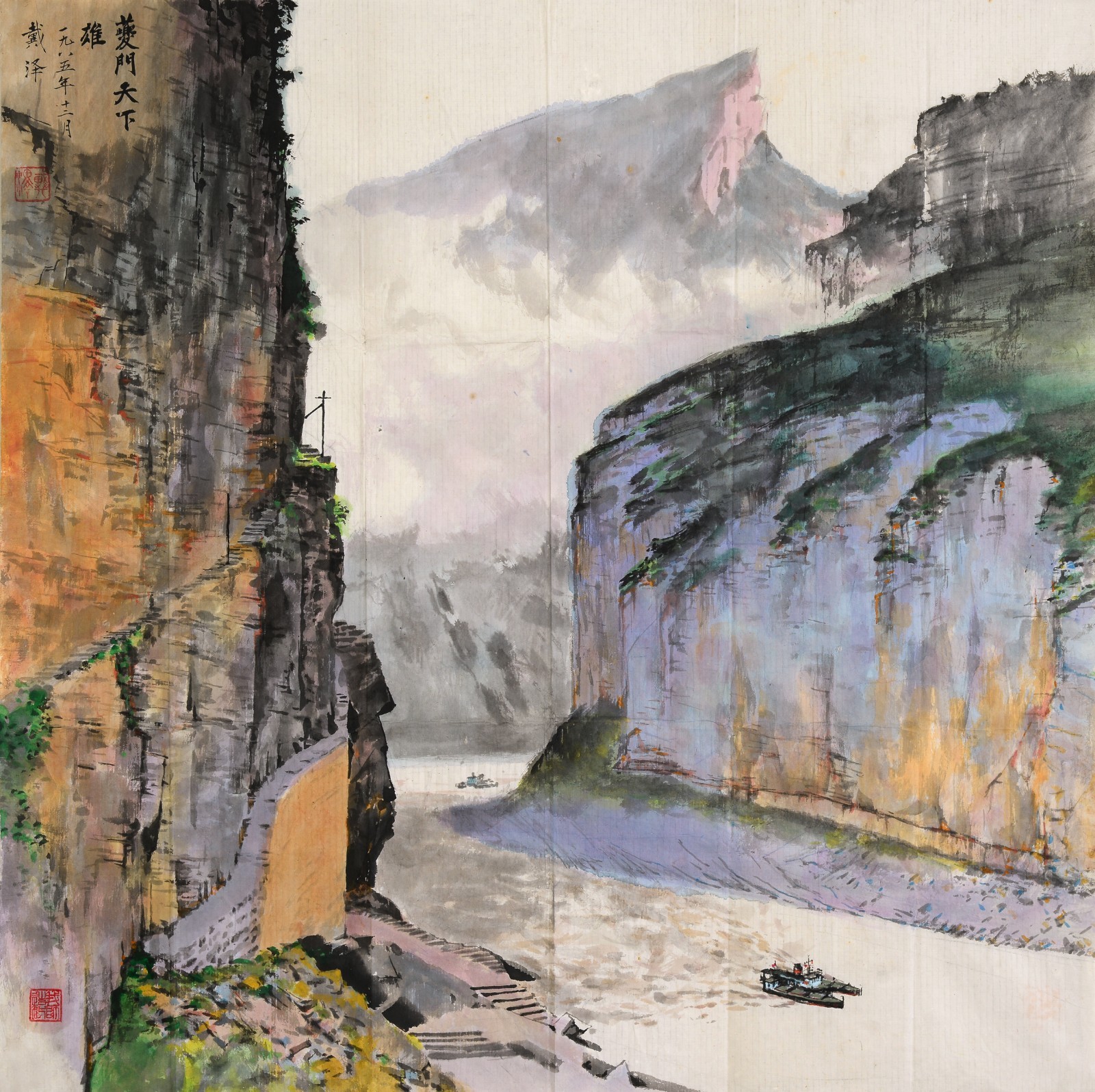 Dai Ze, “Kuimen, the Most Magnificent Landscape”, 102×102cm, Chinese painting on paper, 1985, private collection
Dai Ze, “Kuimen, the Most Magnificent Landscape”, 102×102cm, Chinese painting on paper, 1985, private collection
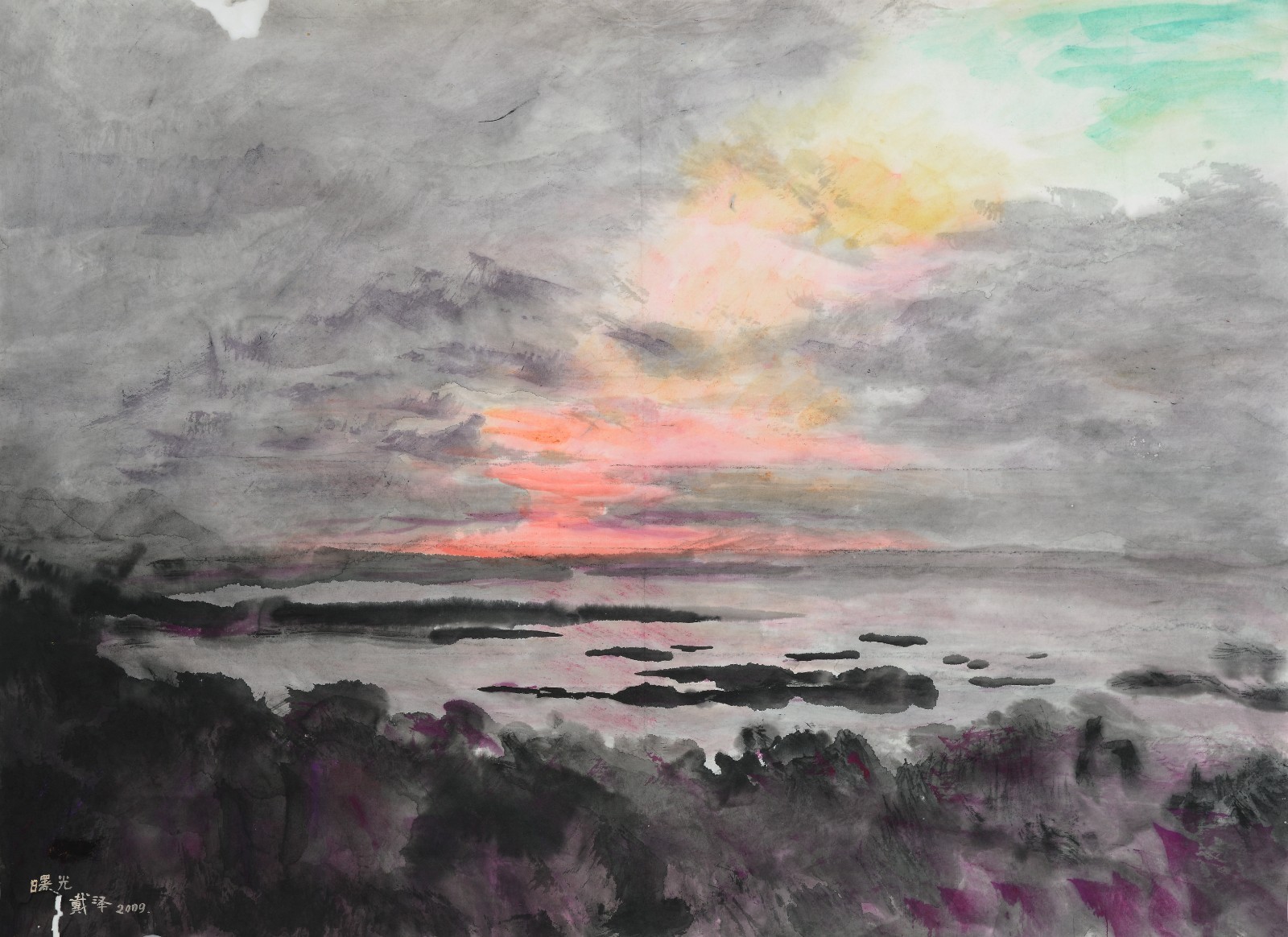 Dai Ze, “Morning Glow”, 70×51cm, Chinese painting on paper, 2009, private collection
Dai Ze, “Morning Glow”, 70×51cm, Chinese painting on paper, 2009, private collection
The third chapter of “Journey” interestingly brings together the traffic themes captured by the artist in his landscape paintings. This section of paintings depicts bridges in Chengdu, Chongqing, Wuhan and other places, as well as the scenery captured by the artist on his way to Tibet. The daily ports, returning boats, highways, bridges, wild trails, and wilderness are included in the paintings. They jointly show this artist who loves sketching from life, and loves to find creative inspiration in real life, and his understanding of “travelling” during his life long journey. There is a vivid narrative in the image, and there is a grand theme of the epoch behind it, inviting the audience to walk into the picture together with Dai Ze in time and space.
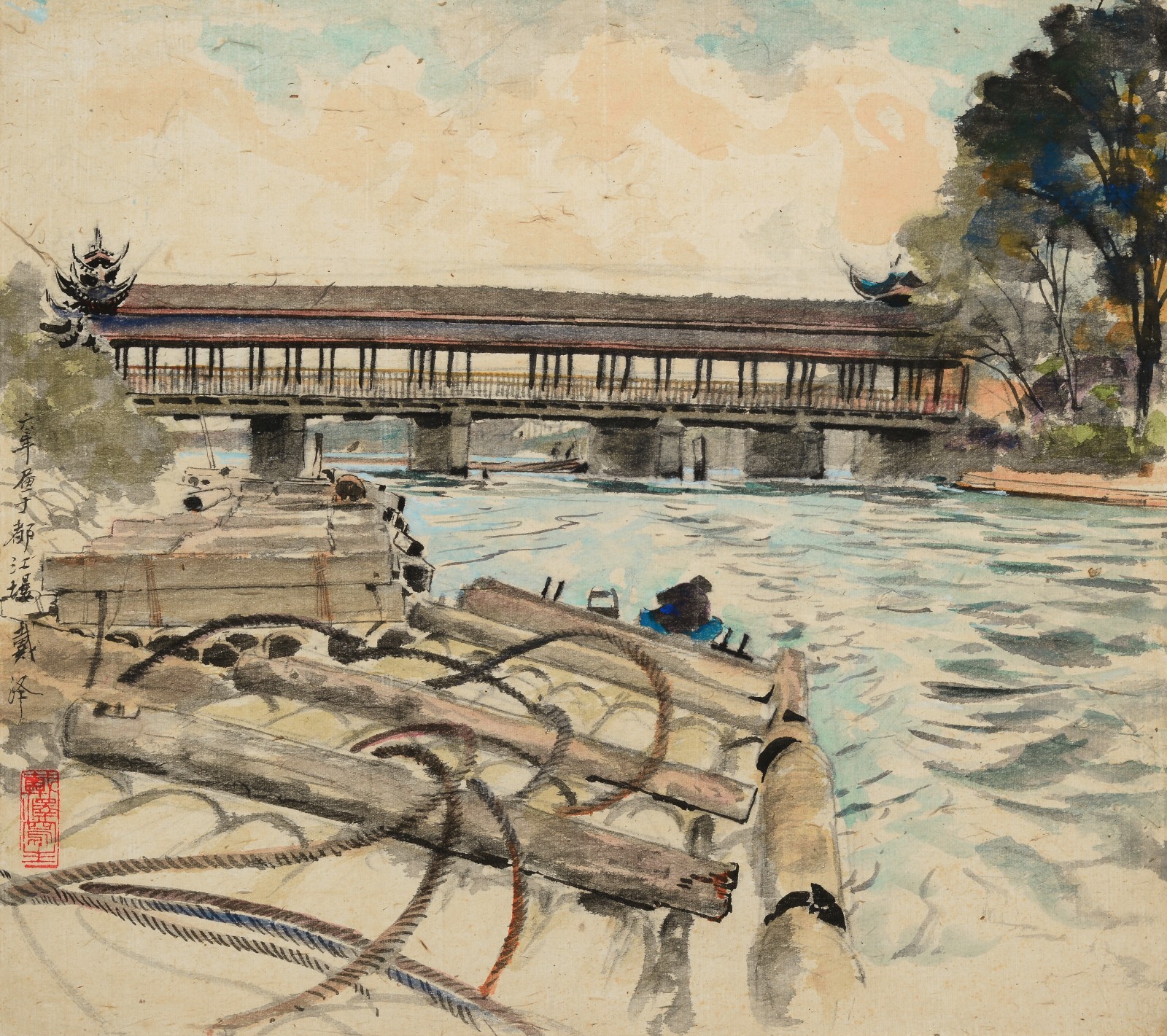 Dai Ze, “Dujiangyan”, 43×38cm, Chinese painting on paper, 1962, private collection
Dai Ze, “Dujiangyan”, 43×38cm, Chinese painting on paper, 1962, private collection
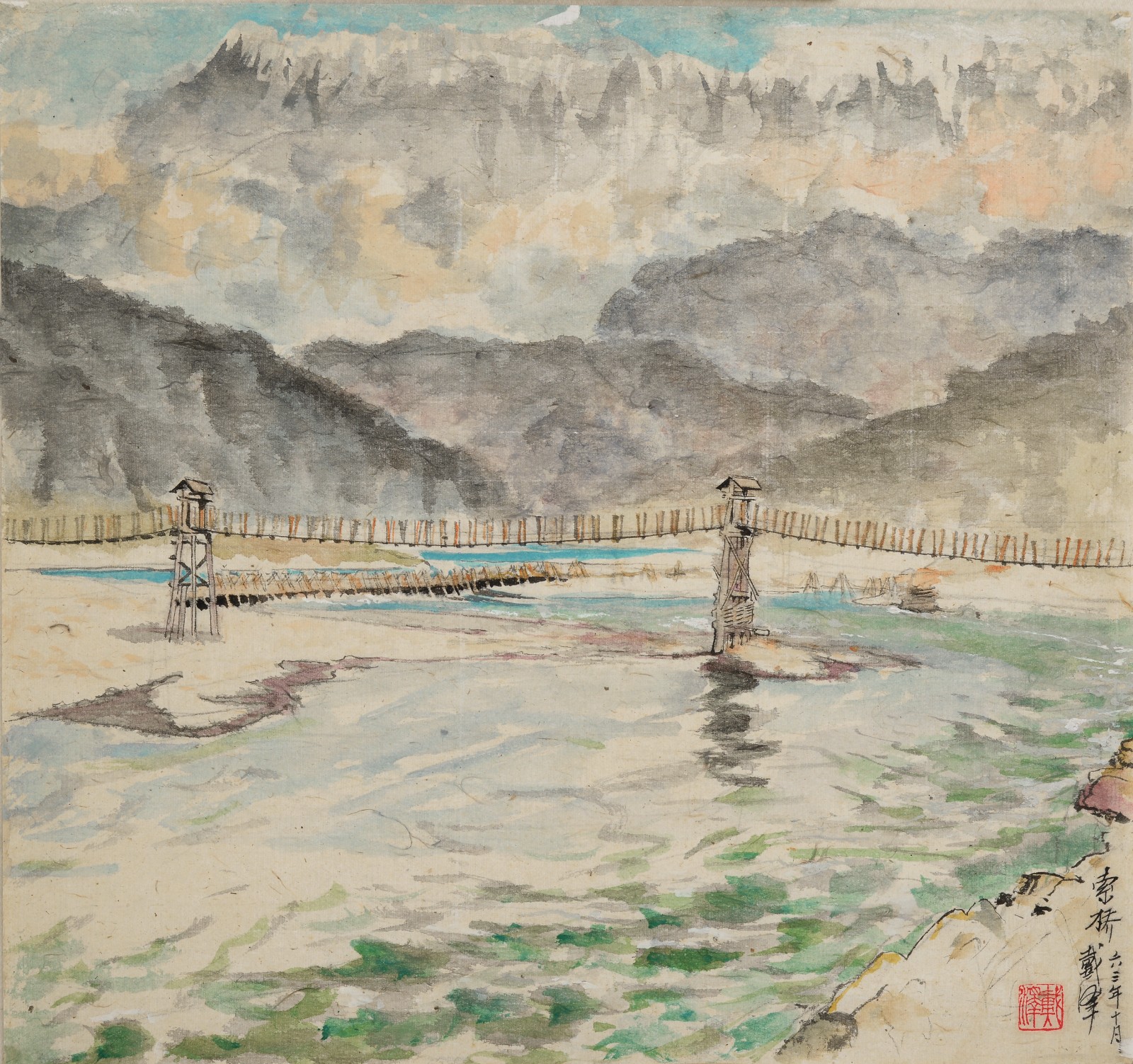 Dai Ze, “Chengdu Cable Bridge”, 42.5×38.5cm, Chinese painting on paper, 1963, private collection
Dai Ze, “Chengdu Cable Bridge”, 42.5×38.5cm, Chinese painting on paper, 1963, private collection
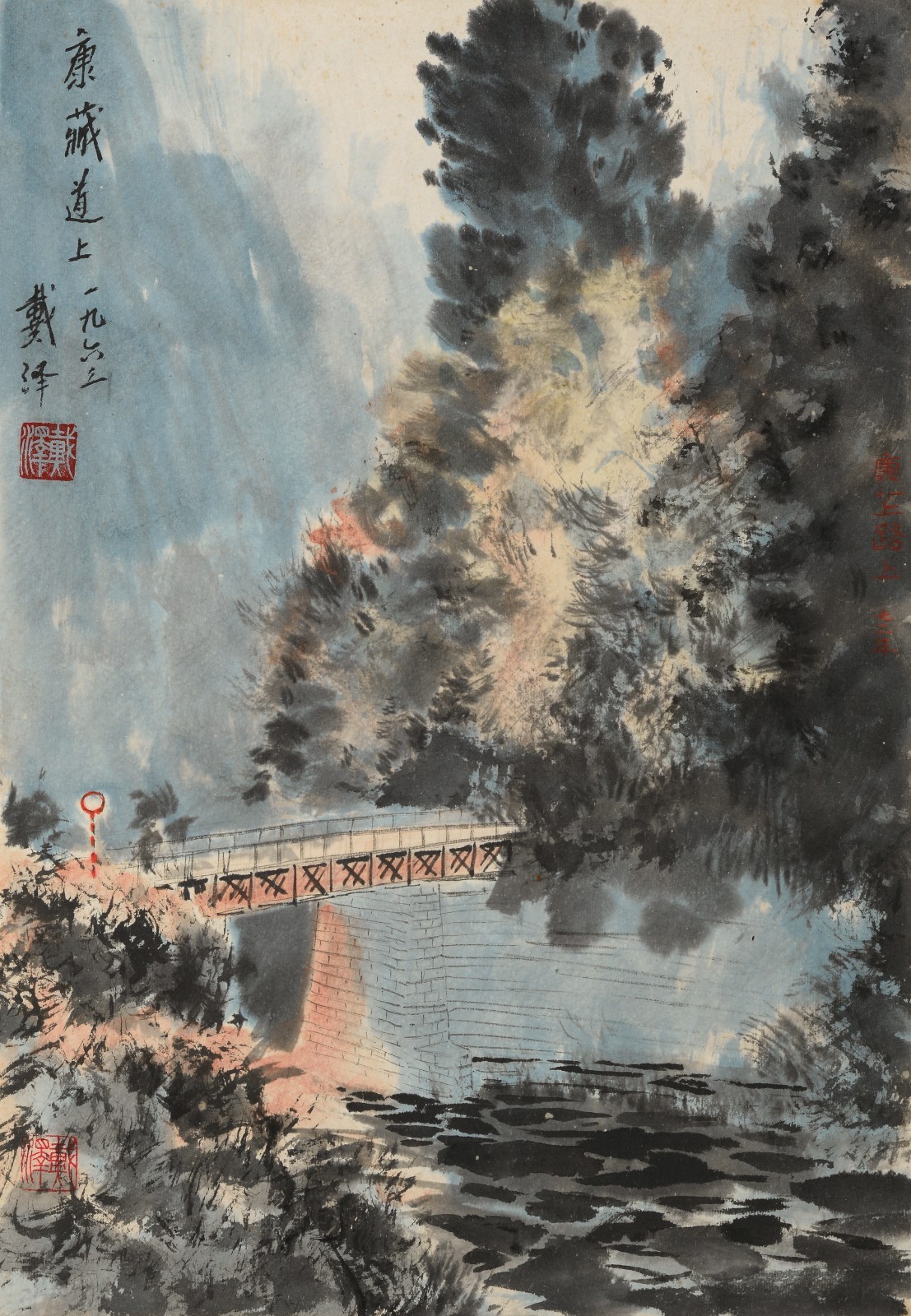
Dai Ze, “On the Road to Kangzang”, 27.5×39.5cm, Chinese painting on paper, 1963, private collection
 Dai Ze, “Autumn Suburbs of Chengdu”, 54×29cm, Chinese painting on paper, 1963, private collection
Dai Ze, “Autumn Suburbs of Chengdu”, 54×29cm, Chinese painting on paper, 1963, private collection
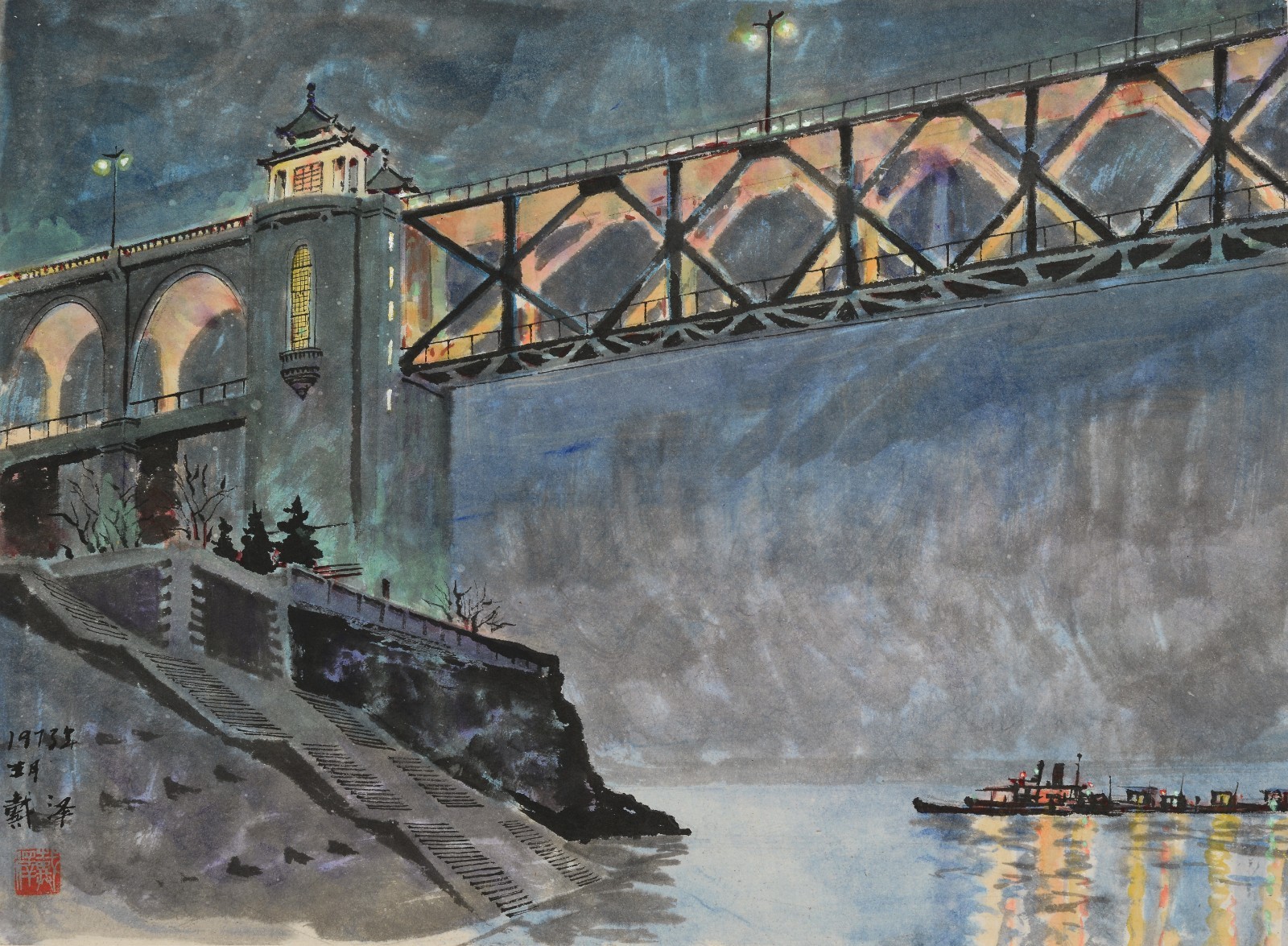 Dai Ze, “Wuhan Yangtze River Bridge”, 51.5×38cm, Chinese painting on paper, 1973, private collection
Dai Ze, “Wuhan Yangtze River Bridge”, 51.5×38cm, Chinese painting on paper, 1973, private collection
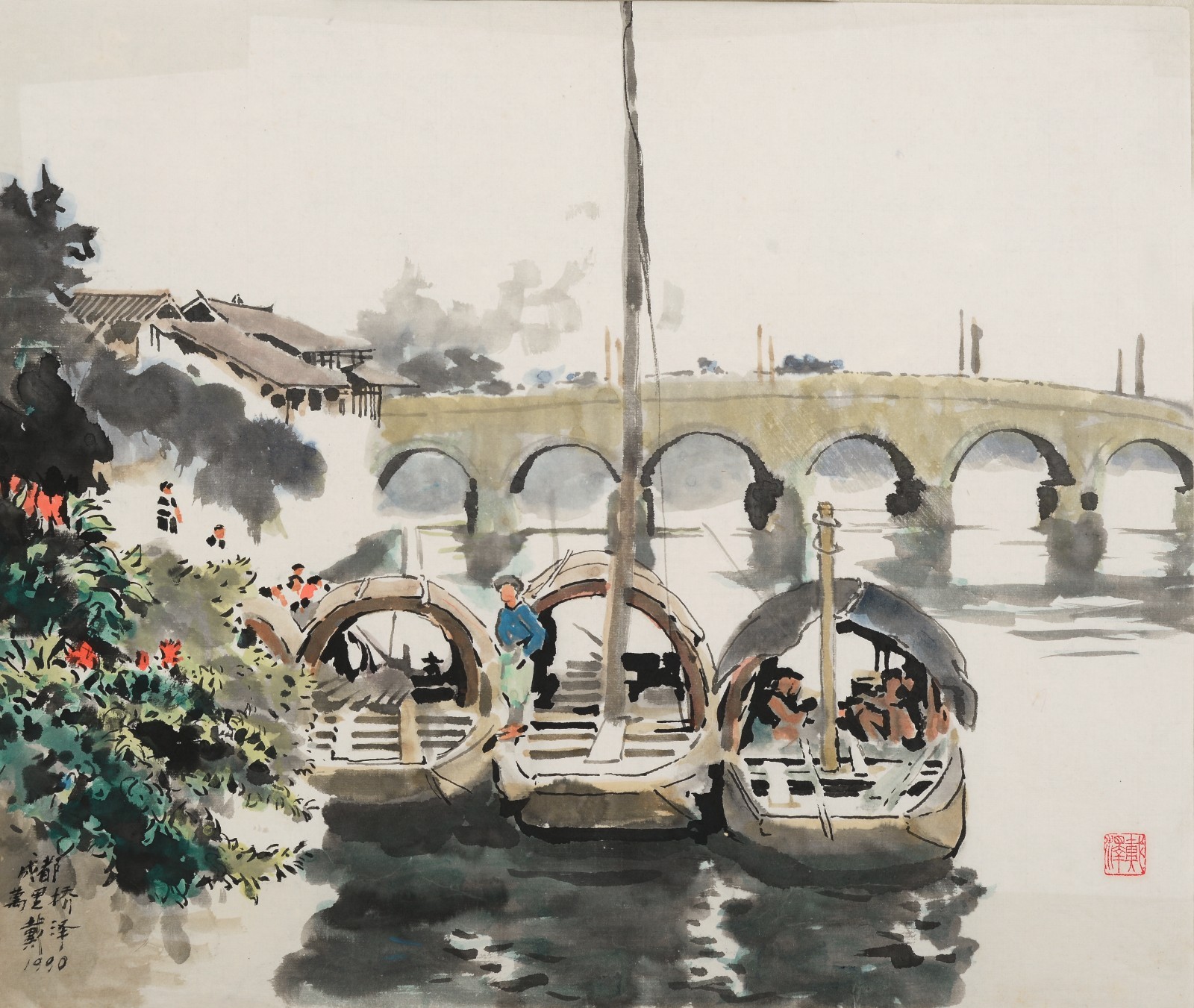 Dai Ze, “Chengdu Wanli Bridge”, 48×41cm, Chinese painting on paper, 1990, private collection
Dai Ze, “Chengdu Wanli Bridge”, 48×41cm, Chinese painting on paper, 1990, private collection
The landscape paintings of Dai Ze selected in the fourth chapter “Exploration” contain two layers of meanings. On the one hand, the exhibition intercepts Dai’s description of the transformation of natural scenes through labor production; on the other hand, the natural scenery is reconstructed to obtain a unique artistic appearance.
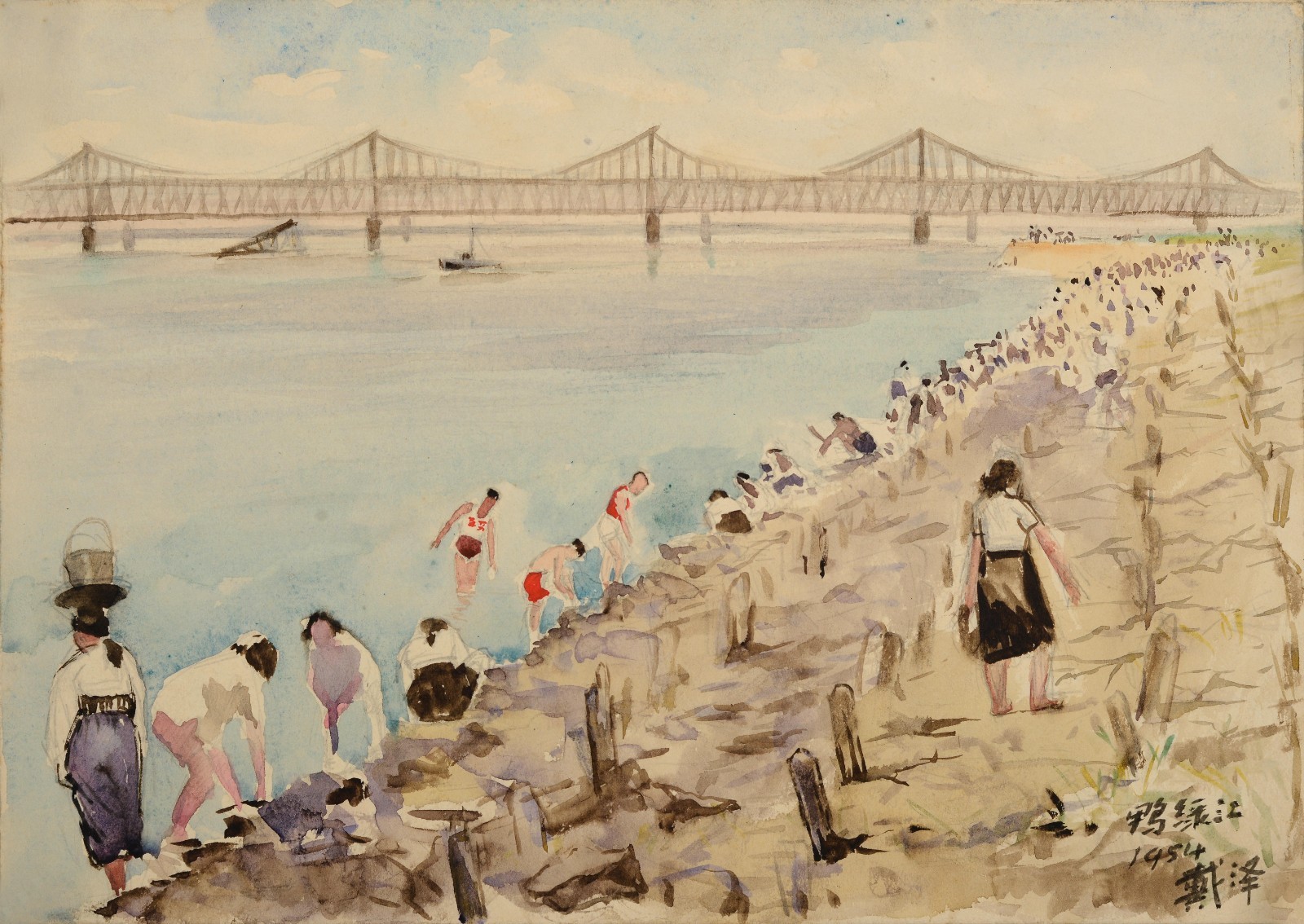 Dai Ze, “Yalu River”, 27.5×19.5cm, Watercolor on paper, 1954, private collection
Dai Ze, “Yalu River”, 27.5×19.5cm, Watercolor on paper, 1954, private collection
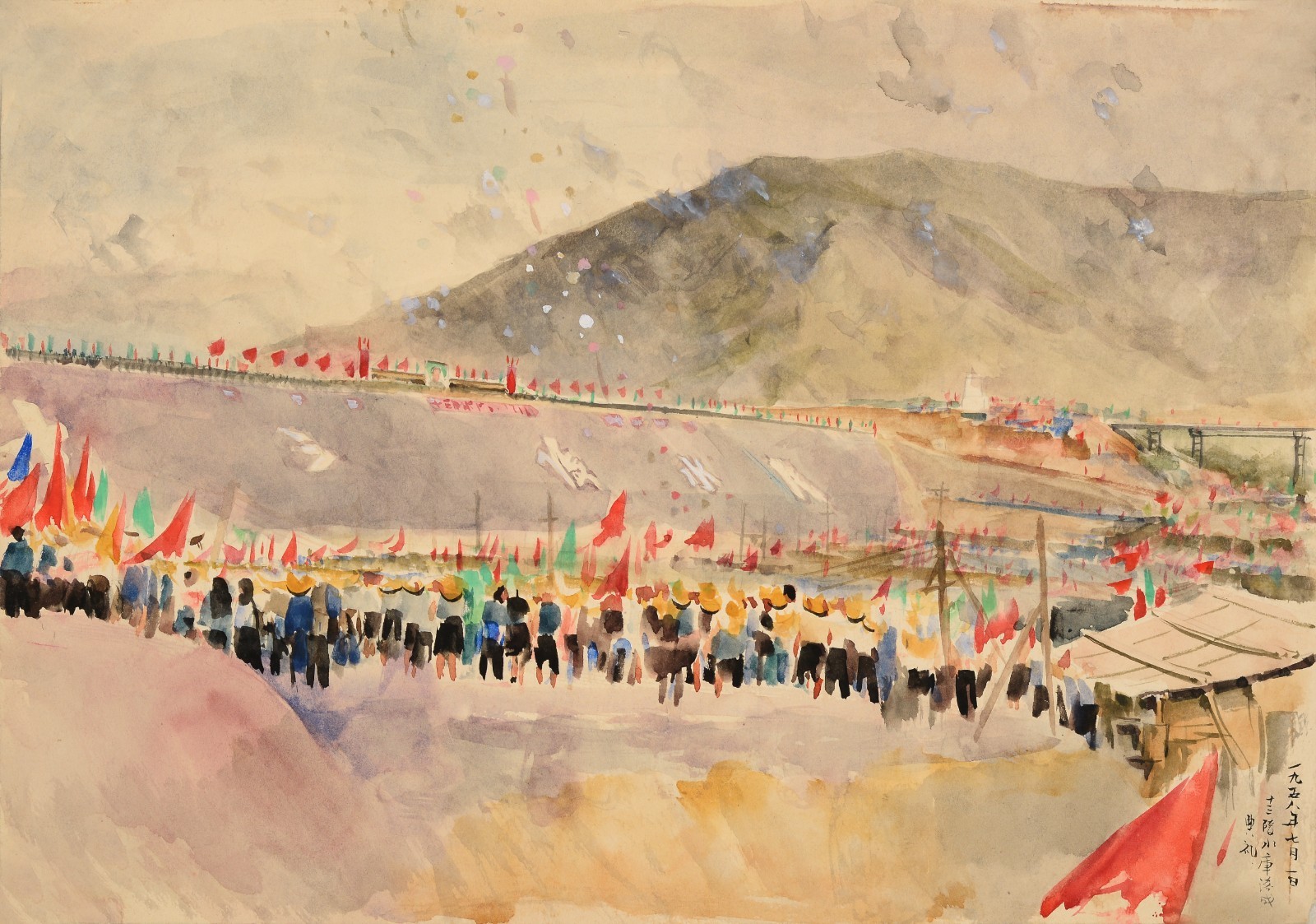 Dai Ze, “Completion of Reservoir Construction near the Ming Tombs”, 37×29cm, Watercolor on paper, 1958, private collection
Dai Ze, “Completion of Reservoir Construction near the Ming Tombs”, 37×29cm, Watercolor on paper, 1958, private collection
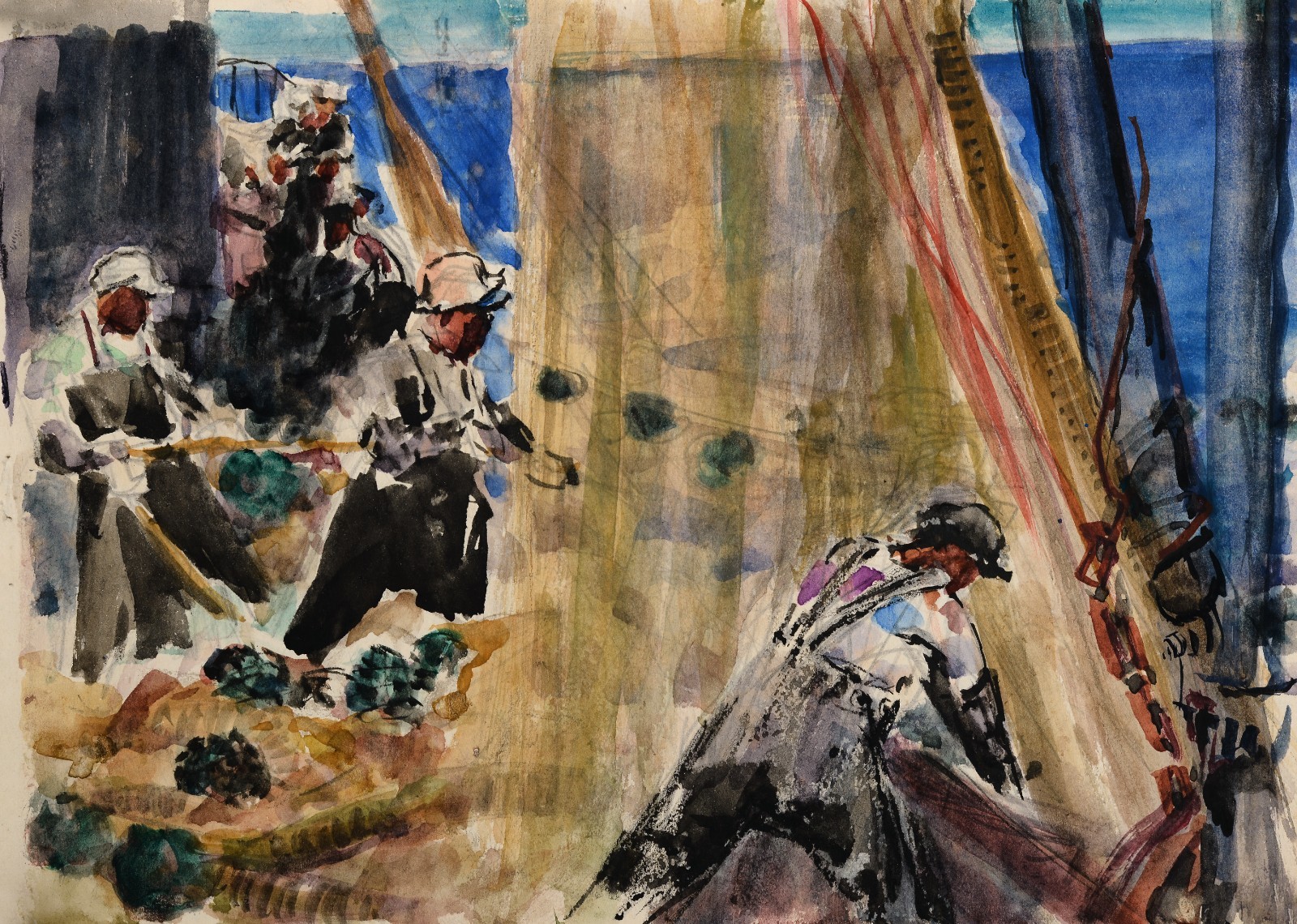 Dai Ze, “Catch”, 25×17cm, Watercolor on paper, private collection
Dai Ze, “Catch”, 25×17cm, Watercolor on paper, private collection
 Dai Ze, “Erqi Vehicle and Locomotive Factory”, 24×18cm, Watercolor on paper, private collection
Dai Ze, “Erqi Vehicle and Locomotive Factory”, 24×18cm, Watercolor on paper, private collection
 Dai Ze, “Yanshan Petrochemical Refinery”, 54.5×40cm, Oil on paper, 1976, private collection
Dai Ze, “Yanshan Petrochemical Refinery”, 54.5×40cm, Oil on paper, 1976, private collection
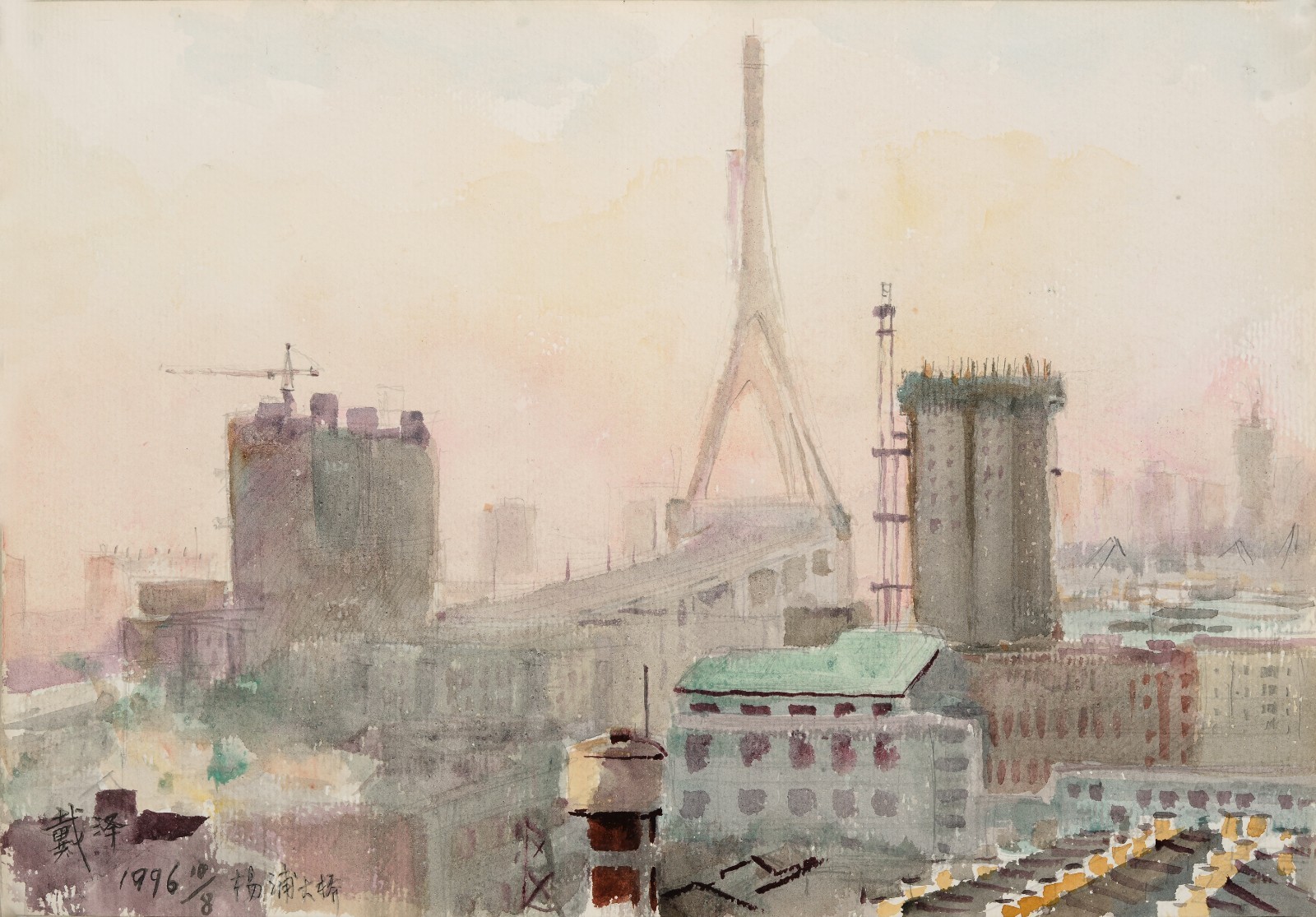 Dai Ze, “Yangpu Bridge”, 44×32cm, Watercolor on paper, 1996, private collection
Dai Ze, “Yangpu Bridge”, 44×32cm, Watercolor on paper, 1996, private collection
“Exploration”, here is not only creation and development, but it also means human labor and the artistic labor of artists, which demonstrates the essential power of human beings. From Dai Ze’s paintings surrounding labor production scenes, one can appreciate the relationship between man and nature as he understands it—not only transforming nature through labor, but also living in harmony with nature. The painter’s process of refining aesthetics in these labor scenes is also the reconstruction of the landscape through the practical power of art.
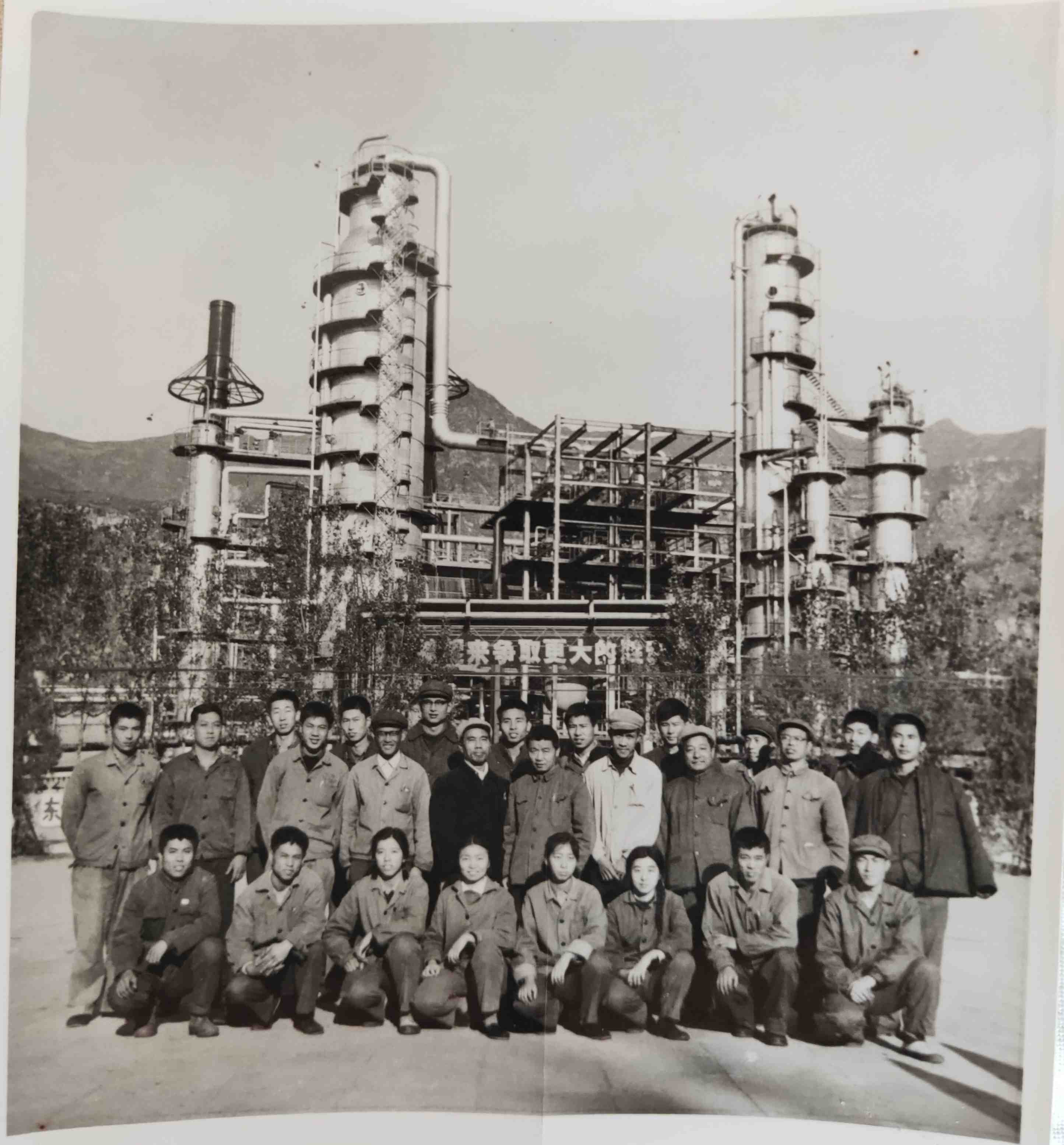 A group photo of Dai Ze in front of Dongfanghong Oil Refinery in 1976
A group photo of Dai Ze in front of Dongfanghong Oil Refinery in 1976
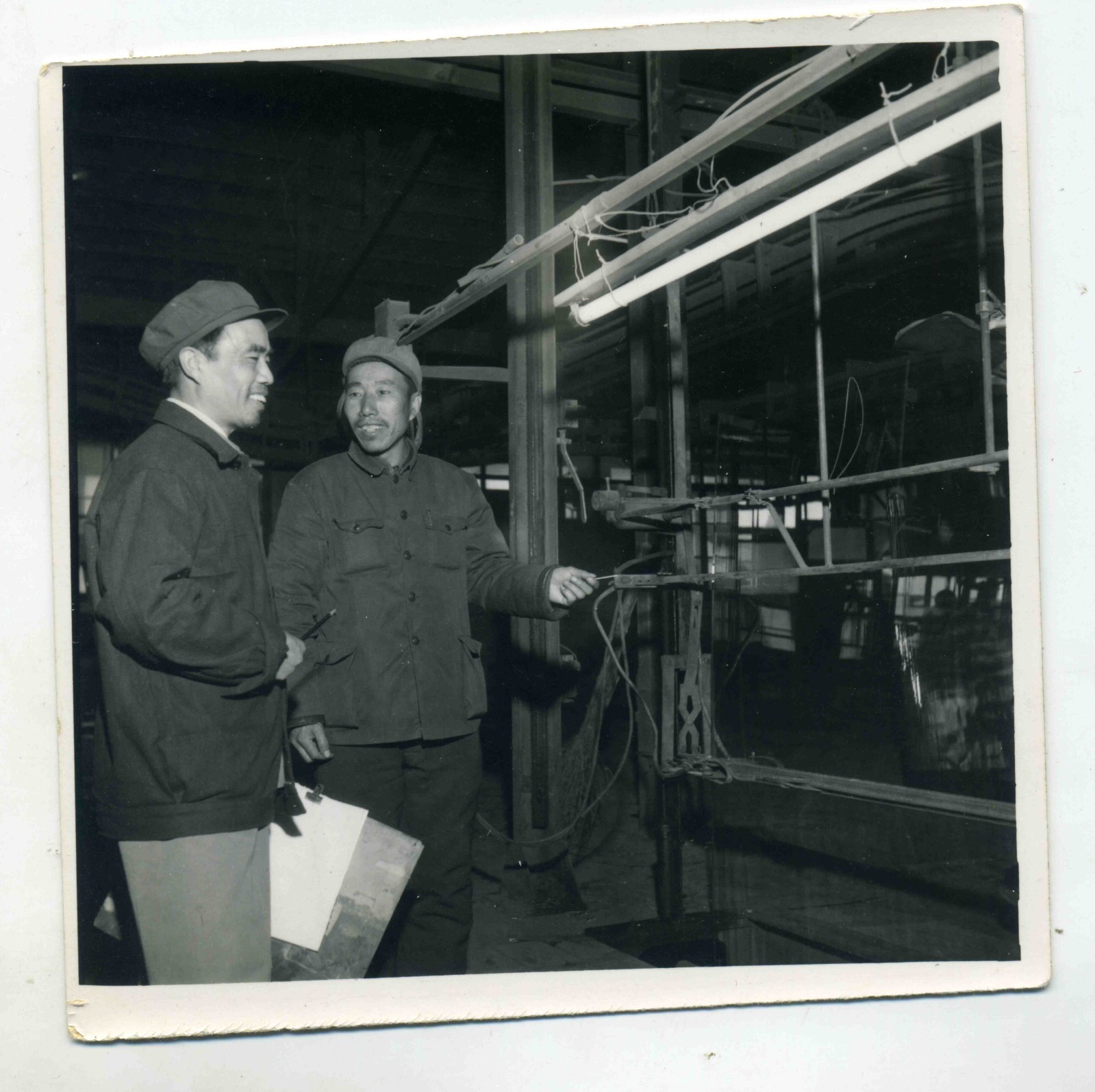 Inspection in Qinhuangdao Glass Factory in 1977
Inspection in Qinhuangdao Glass Factory in 1977
Homeland Scenery
This exhibition is held in Chengdu Art Museum as Sichuan is the hometown of Dai Ze. This exhibition is also the first time for the artist to hold a solo exhibition in his hometown, which is of special commemorative significance. According to the curator, from the six chapters, the fifth chapter “Homeland” is the core chapter, which echoes the theme of this retrospective.
Township, that is, hometown, the original hometown, is the place for growth of people in the landscape. Sichuan is the hometown of Dai Ze, as well as his source of inspiration and blood. In 1973, Dai Ze once returned to Sichuan. On the way back to Beijing, he went upstream from the Three Gorges, painting while travelling. After that, Dai Ze never had the opportunity to return to his hometown.
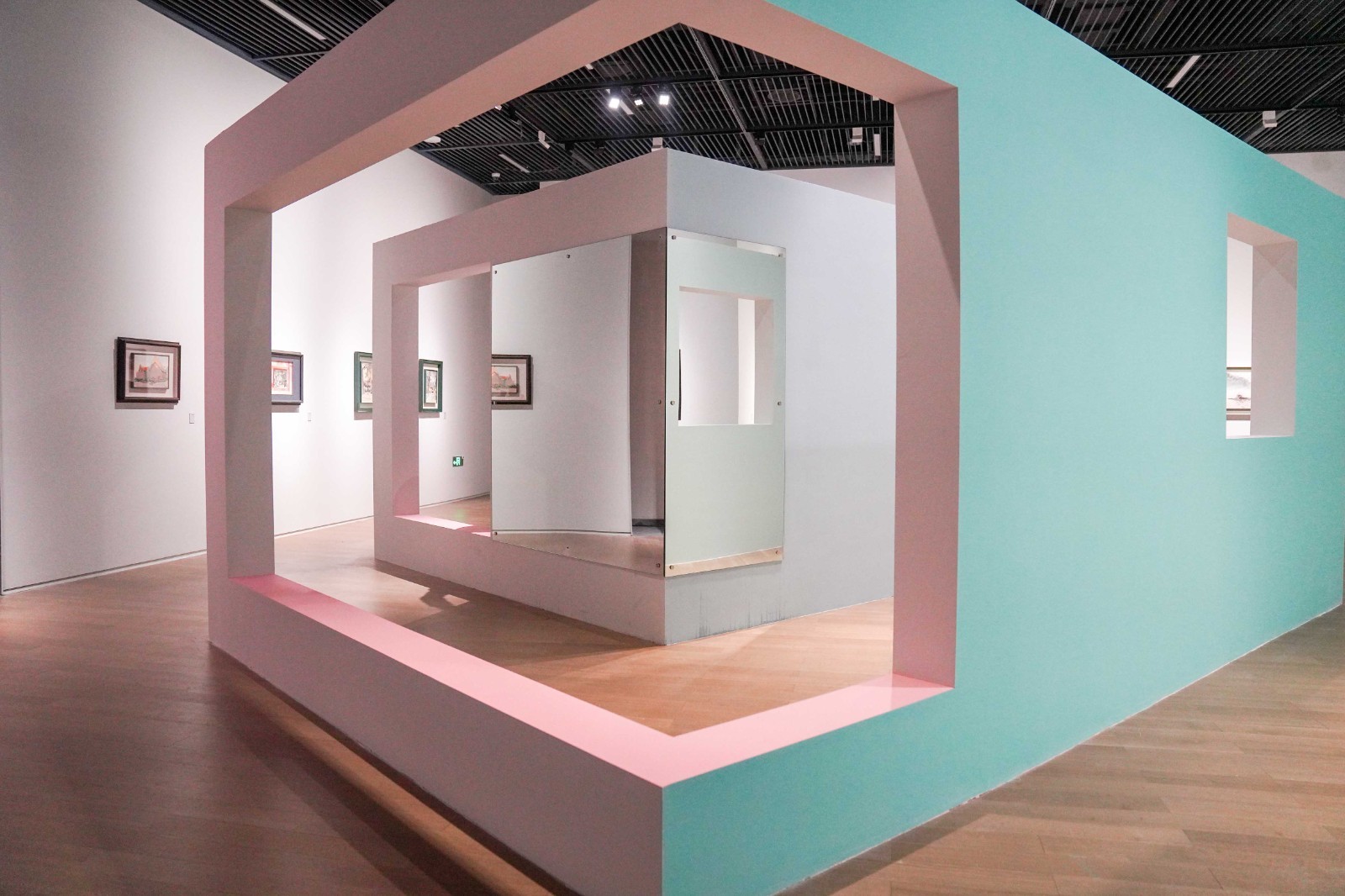
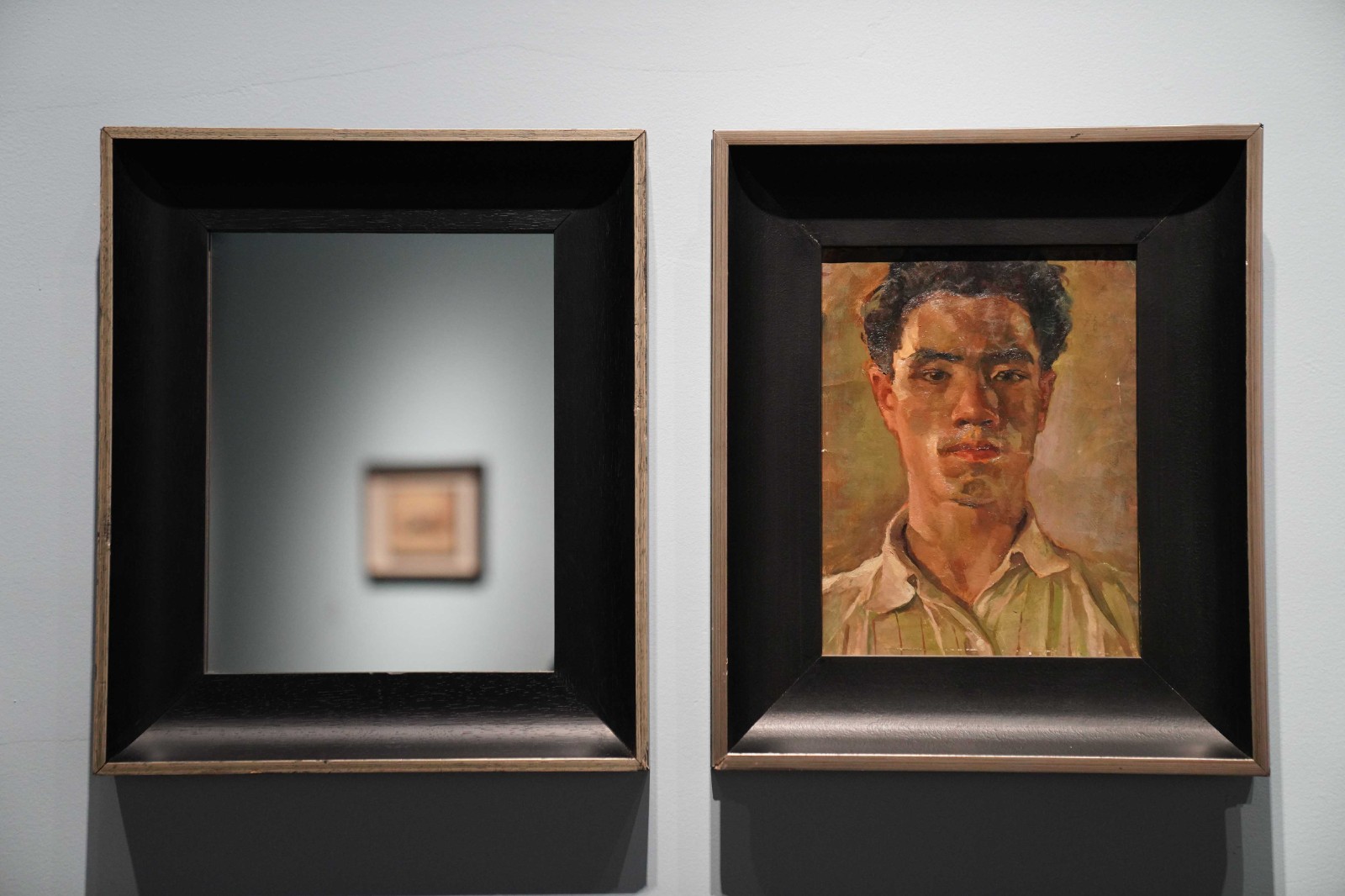
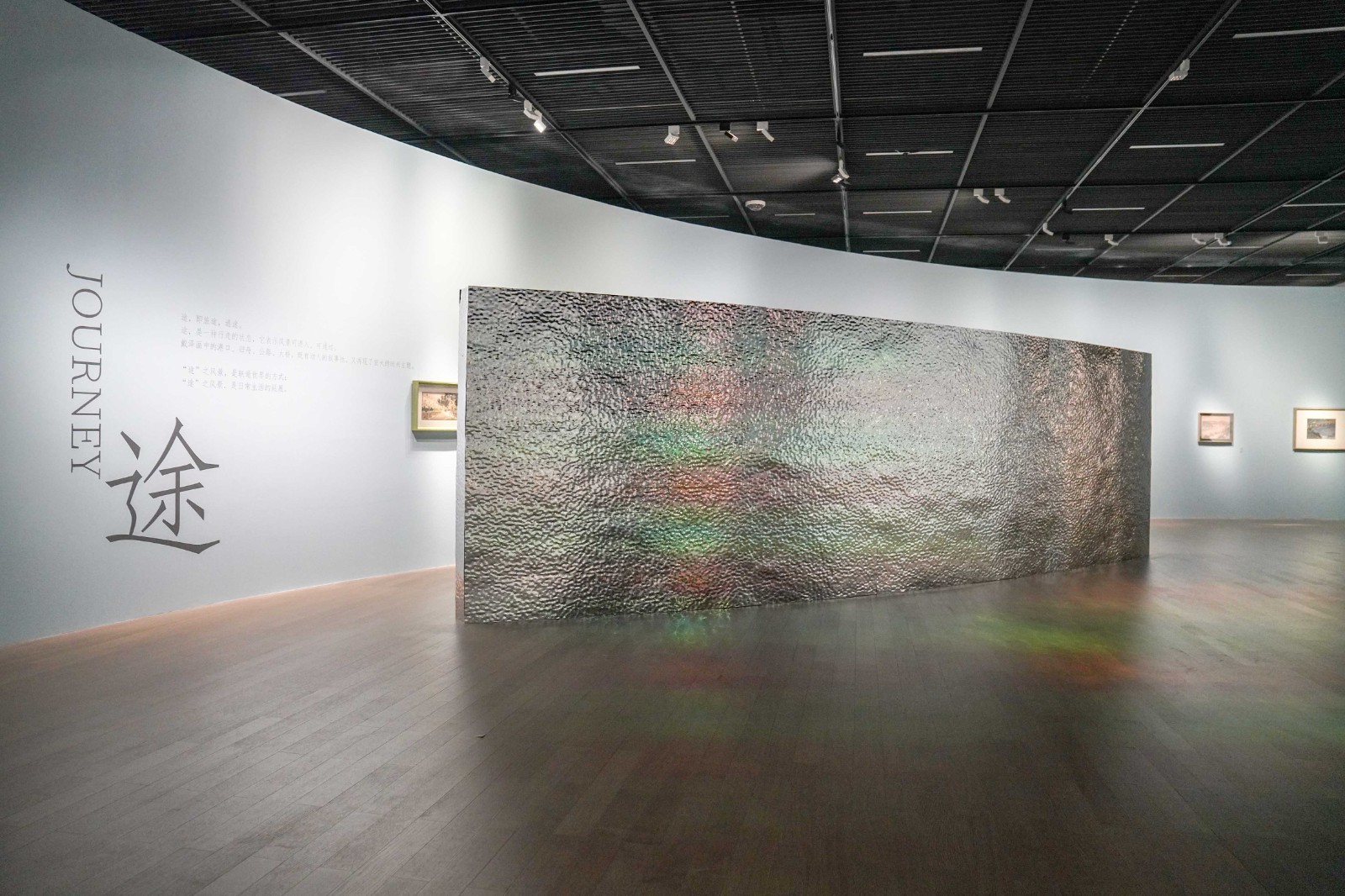 Exhibition View, Photo by Li Guangxin
Exhibition View, Photo by Li Guangxin
The chapter “Homeland” presents the artist’s description of the two most important places to him, Beijing and Sichuan. In the paintings, the artist has repeatedly described the natural scenery and customs of his hometown in Sichuan, connecting the artist with the emotions of his hometown through painting.
 Dai Ze, “The Streets of Peiping”, 20×28.5cm, Watercolor on paper, 1946, private collection
Dai Ze, “The Streets of Peiping”, 20×28.5cm, Watercolor on paper, 1946, private collection
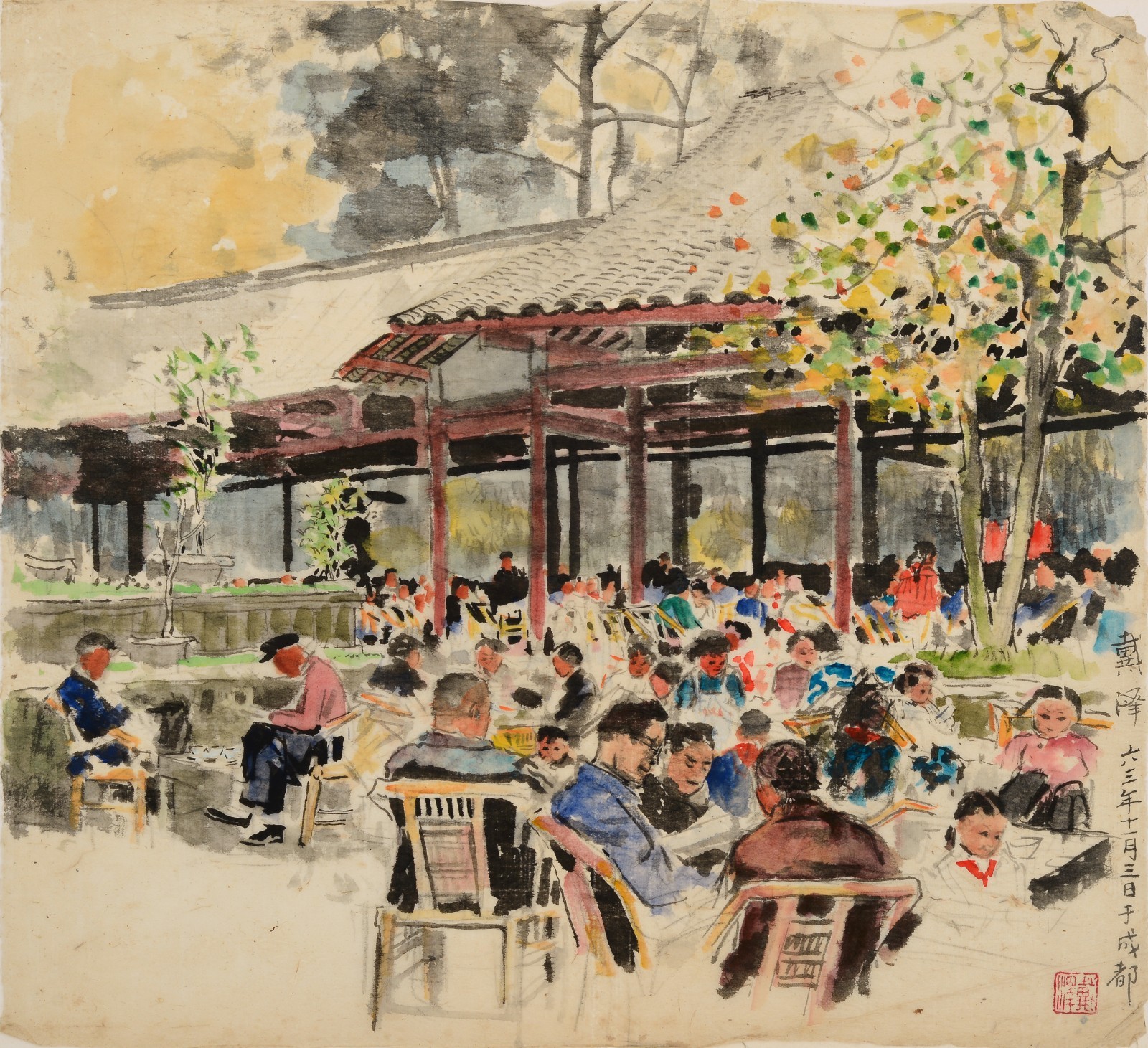 Dai Ze, “Chengdu”, 43.5×38.5cm, Ink and color on paper, 1963, private collection
Dai Ze, “Chengdu”, 43.5×38.5cm, Ink and color on paper, 1963, private collection
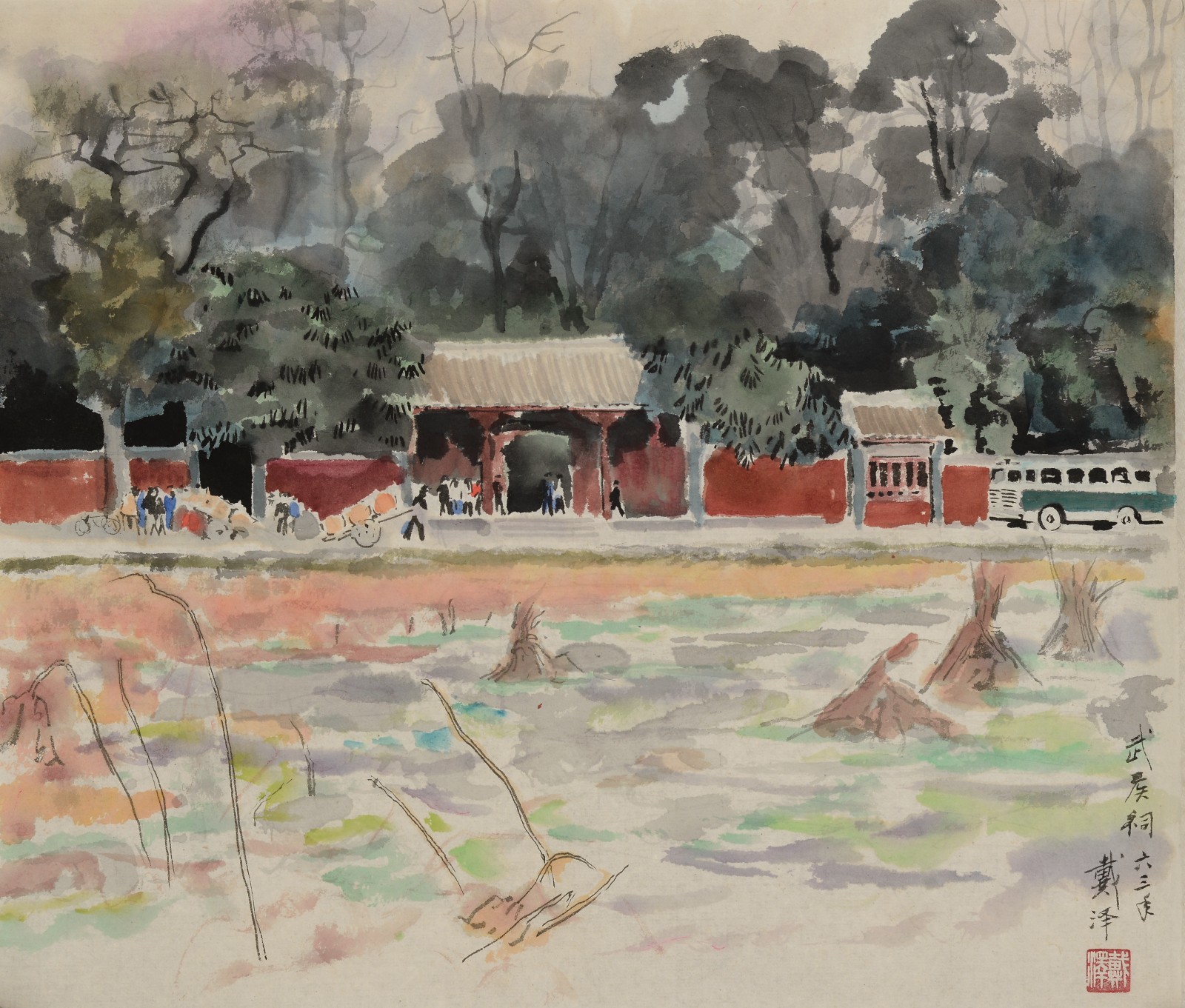 Dai Ze, “Wuhou Temple”, 40×34.5cm, Chinese painting on paper, 1963, private collection
Dai Ze, “Wuhou Temple”, 40×34.5cm, Chinese painting on paper, 1963, private collection
Dai Ze recalled the scenes about his hometown and childhood very vividly: “The Yangtze River is at the gate of my school. When the weather is hot, my playmates and I often go swimming and fish in the water. In winter, the adults cut the meat into large pieces and salt it, then hang it up and smoke it, it tastes very good.”[4] The interest and nostalgia of the homeland are all reflected in Dai Ze’s sketches in Sichuan. The painter’s tenacity to seek truth and beauty in his life, his reflection of real life, and his sensitivity and love for the vivid life in the city are exactly the unique spiritual qualities that Sichuan has endowed him with.
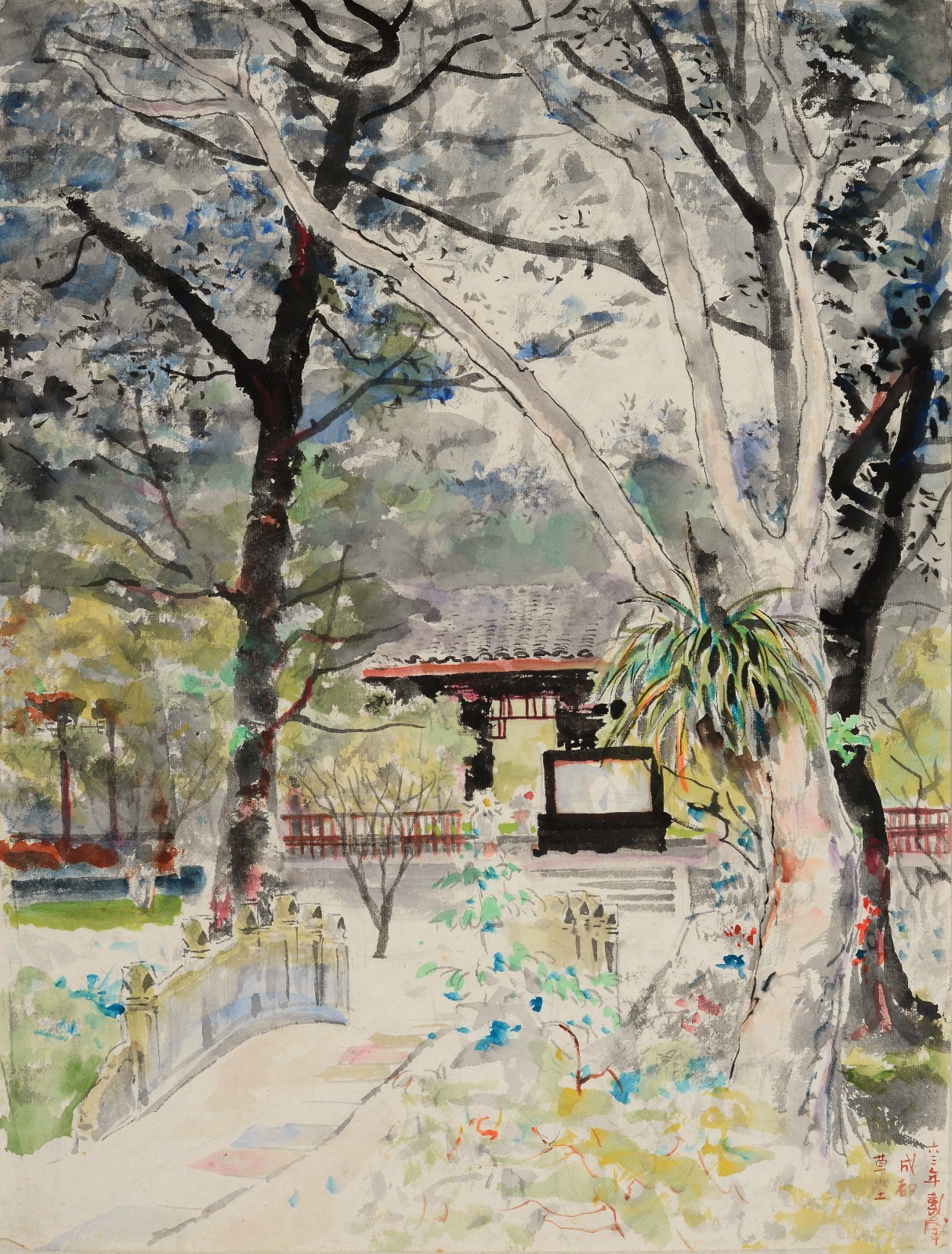 Dai Ze, “Du Fu Thatched Cottage”, 33.5×44cm, Chinese painting on paper, 1963, private collection
Dai Ze, “Du Fu Thatched Cottage”, 33.5×44cm, Chinese painting on paper, 1963, private collection
 Dai Ze, “Du Fu Thatched Cottage”, 40×35cm, Chinese painting on paper, 1963, private collection
Dai Ze, “Du Fu Thatched Cottage”, 40×35cm, Chinese painting on paper, 1963, private collection

Dai Ze, “Outside the Window”, 45×68cm, Chinese painting on paper, 2009-2010, private collection
The last chapter, “Wildness”, jointly presents Dai’s landscape works that focus on depicting the natural wildness in his middle and later years. Dai Ze’s eye disease became more and more serious as he aged. In these landscape paintings, the artist showed a more relaxed state, possessing a kind of almost unrestrained artistic freedom. After 2008, Dai Ze’s vision deteriorated further, and he was unable to deeply depict objects, but this prompted the artist to complete another creative transformation. He began to express the main relationship of the picture using strong colors and large-scale brushstrokes. He no longer sticks to images and details, but expresses emotions freely in a more expressive and freehand way, thus stepping into a new realm of art.
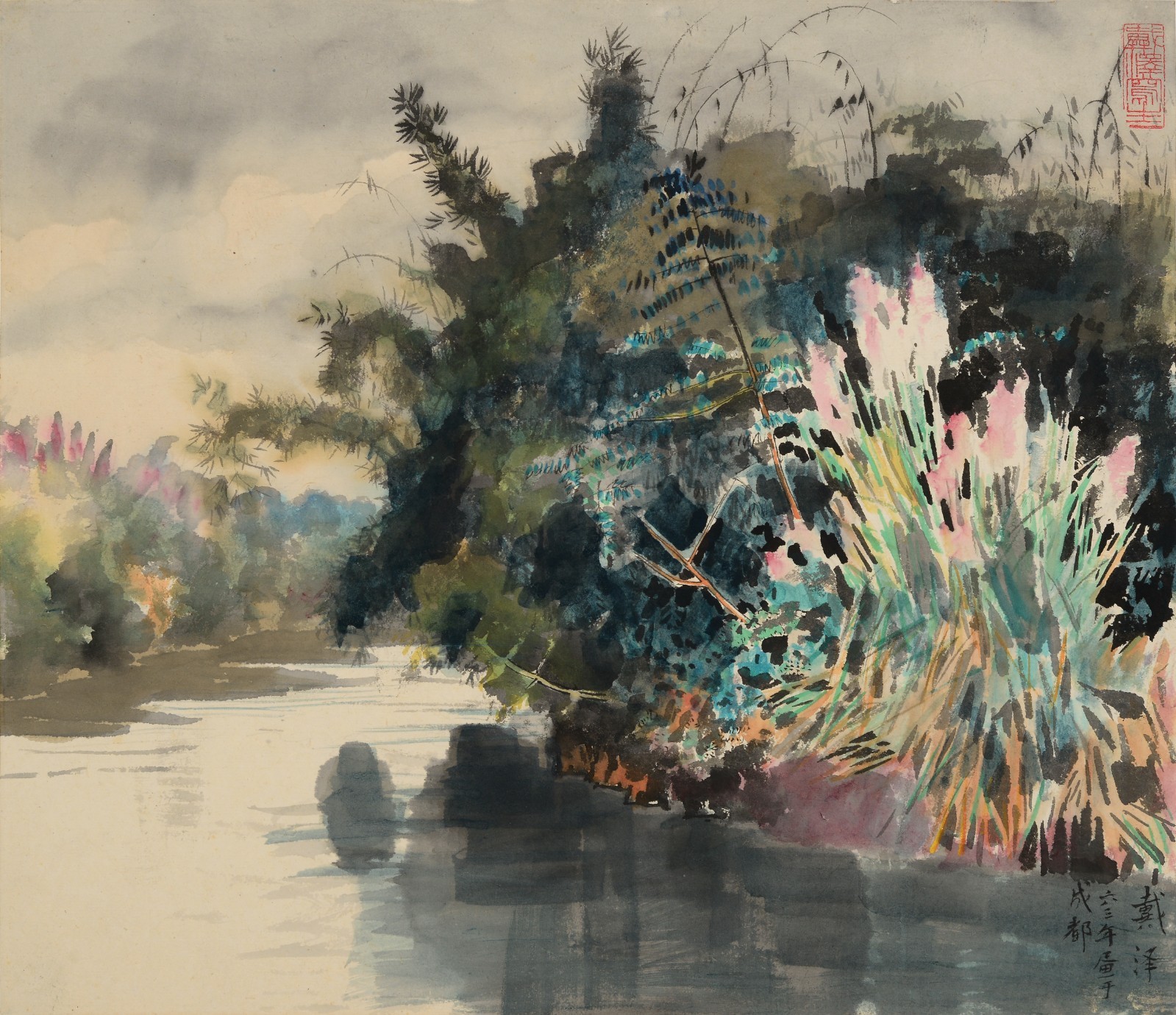 Dai Ze, “By the River in Chengdu”, 40×34.5cm, Chinese painting on paper, 1963, private collection
Dai Ze, “By the River in Chengdu”, 40×34.5cm, Chinese painting on paper, 1963, private collection
 Dai Ze, “Yan Mountain”, 47×28.5cm, Chinese painting on paper, 1972, private collection
Dai Ze, “Yan Mountain”, 47×28.5cm, Chinese painting on paper, 1972, private collection
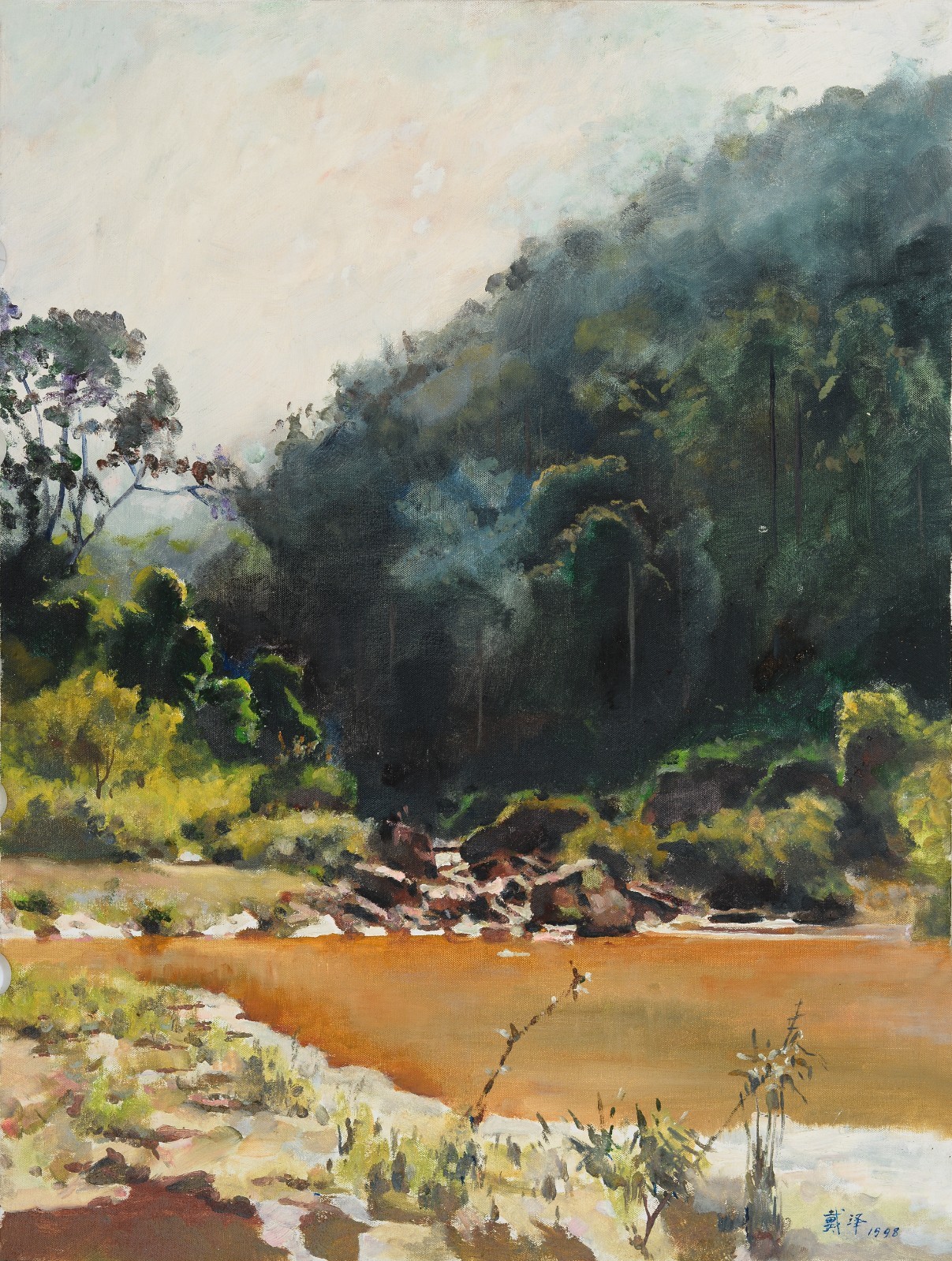 Dai Ze, “Red River”, 45.5×61cm, Oil on paper, 1998, private collection
Dai Ze, “Red River”, 45.5×61cm, Oil on paper, 1998, private collection
 Dai Ze, “Hazy”, 66×44.5cm, Chinese painting on paper, 2011, private collection
Dai Ze, “Hazy”, 66×44.5cm, Chinese painting on paper, 2011, private collection Dai Ze, “Zhangjiajie”, 70×137cm, Chinese painting on paper, 2013, private collection
Dai Ze, “Zhangjiajie”, 70×137cm, Chinese painting on paper, 2013, private collection
Different from previous Dai Ze solo exhibitions, this exhibition not only has a stronger curatorial concept, but also emphasizes the consideration of the formal sense. There are also many highlights in the design of the exhibition space, such as the specially built “virtual image” installation, allowing the audience to feel Dai Ze’s visual experience; the overall visual structure of the exhibition is also more avant-garde, which makes the exhibition’s positioning more youthful, revealing the vision of gaining a new generation as the audience at the moment and making the works by Dai Ze radiate a new vitality. The exhibition also has a special unit, in which Dai Ze’s “Fortune Leopard” series works are displayed to echo the festive atmosphere during the Spring Festival.
According to the curator, the poster changed its draft several times, and finally adopted the method of woodblock lettering, and through “Drawing from the Unseen”, the leopard by Dai can be glimpsed from the words. Leopard has always been regarded as Dai’s self-portrait, and the Leopard seems to be examining the present with his eyes that have passed through the century.
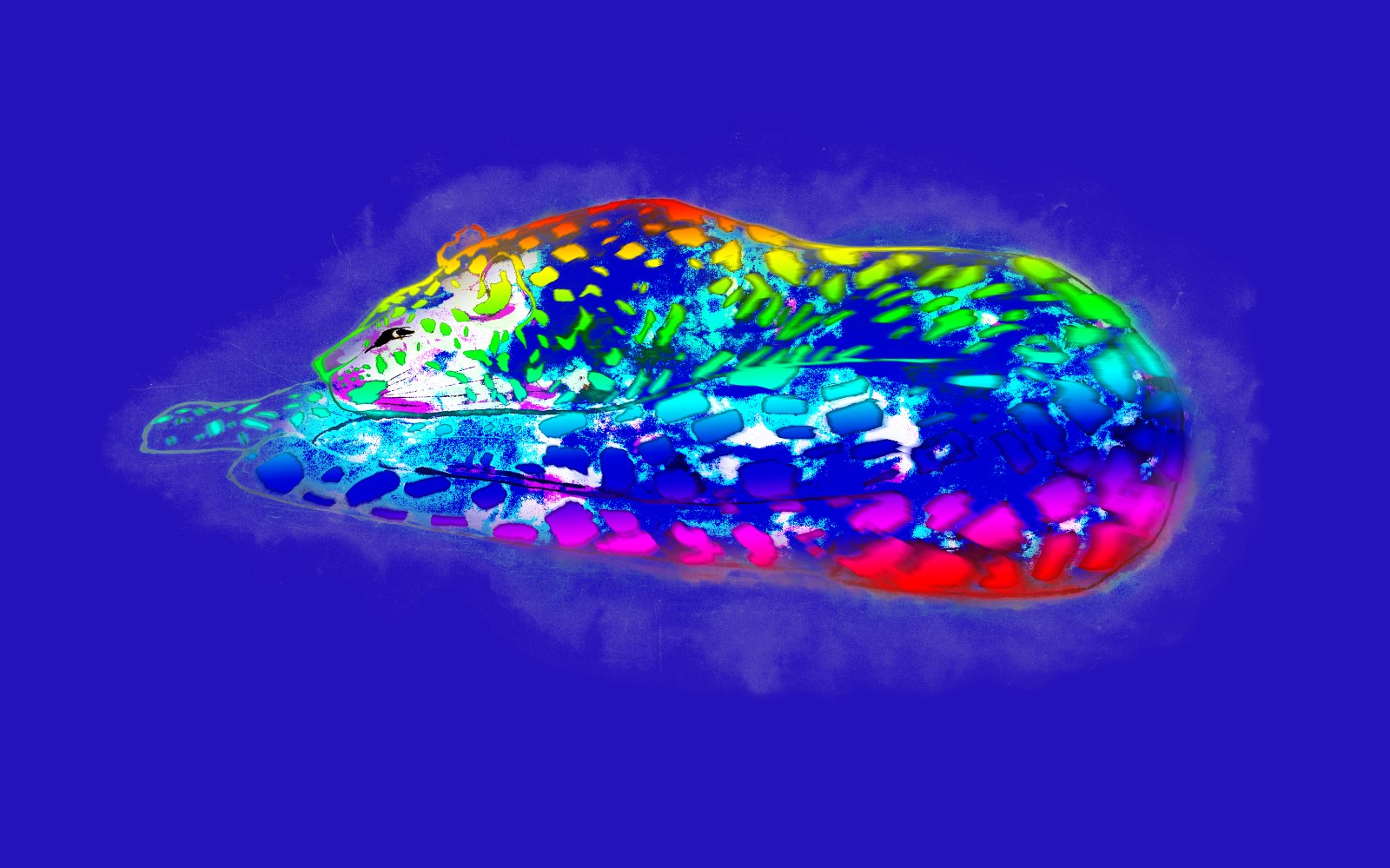 Dai Ze, “Fortune Leopard I”, Traditional rice paper, 80×50cm, 2021
Dai Ze, “Fortune Leopard I”, Traditional rice paper, 80×50cm, 2021
 Dai Ze, “Fortune Leopard II”, Traditional rice paper, 80×50cm, 2021
Dai Ze, “Fortune Leopard II”, Traditional rice paper, 80×50cm, 2021
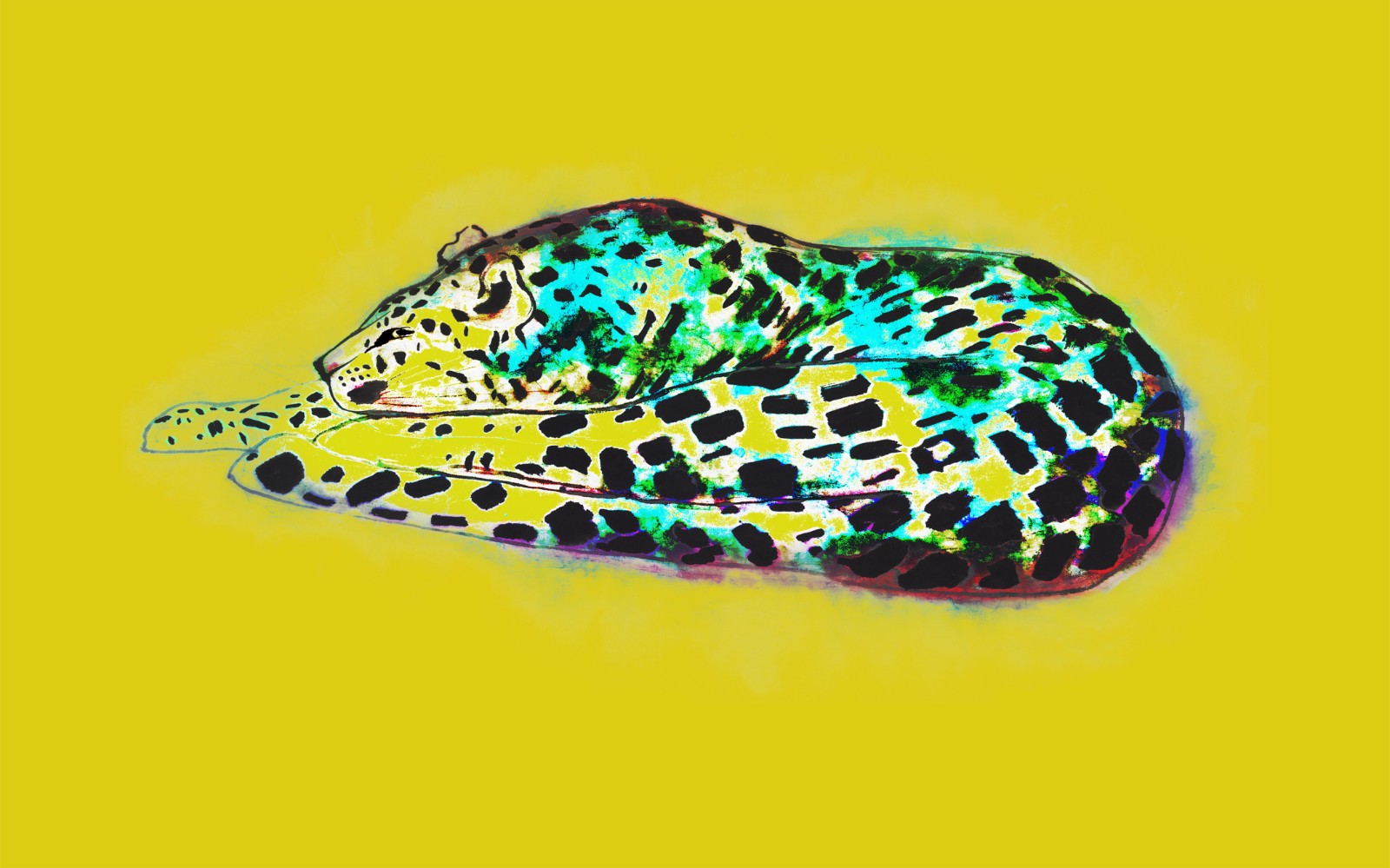 Dai Ze, “Fortune Leopard III”, Traditional rice paper, 80×50cm, 2021
Dai Ze, “Fortune Leopard III”, Traditional rice paper, 80×50cm, 2021
“Drawing from the Unseen: A Retrospective of Dai Ze’s Landscape Paintings” intends to guide the audience to cast their eyes on the works themselves, following the artist’s gaze, and offering a sense of feeling of the thinking and life conveyed by the artist through a review and presentation of Dai’s paintings. The artistic concept contained in his landscape paintings has once again confirmed his belief that “painting what you see” is not a cold mechanical record, but a preservation full of life.[5]
Text by Mengxi, trans. by Sue/CAFA ART INFO
Image Courtesy of Chengdu Art Museum.
References:
[1] “Drawing from the Unseen: A Retrospective of Dai Ze’s Landscape Paintings”, The preface of the exhibition
[2] Interview with curator Ding Lanxiang
[3] Wei Qimei, “A Painter Who Respects Nature”, Art Research, Issue 4, 1982.
[4] “Dai Ze: Master Xu Beihong’s Disciple from the Yellow Ge Tree”, Chongqing Daily.
[5] Shang Hui, “Painting What You See—Teachers, Friends, Family Members and Common People in Dai Ze’s works”, Art Research, Issue 1, 2022.
About the exhibition

Dates: December 18, 2022 - February 12, 2023
Sponsor: Chengdu Art Museum
Academic Host: Huang Zongxian
Curators: Ding Lanxiang, He Yuhang
Academic support units: Central Academy of Fine Arts Art Museum, Dai Ze Art Fund
Visual Design: Li Xuefeng, Li Yaoyao
Venue: Exhibition halls A9, A10, and A11 on the first floor of Chengdu Art Museum Area A (Tianfu Art Museum)




























